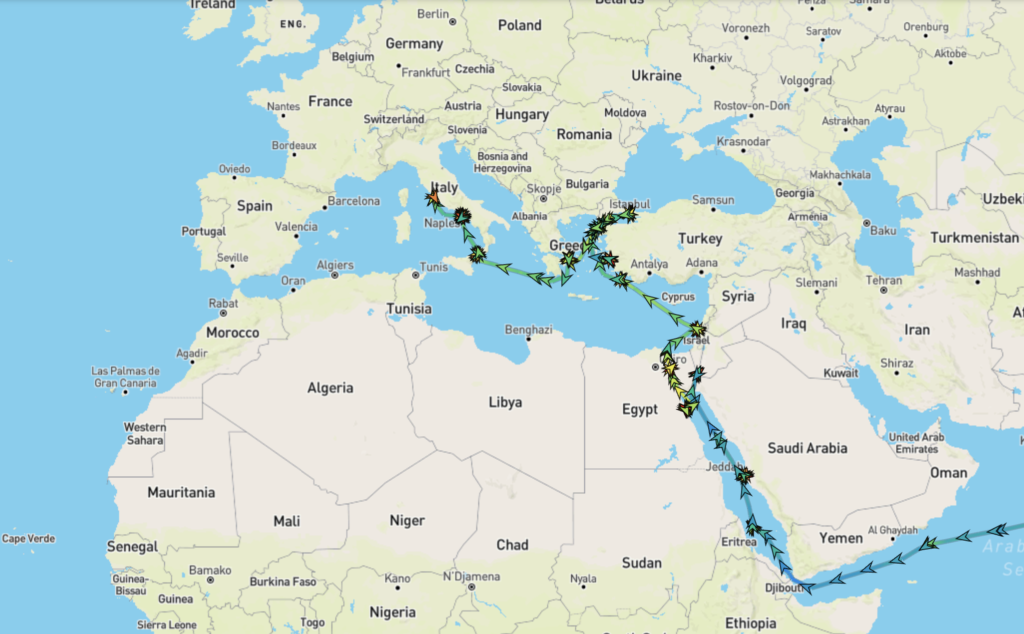
Noon Report:
- Location: N 42° 05.95′, E 011° 46.44′
- Speed: Docked
- Course: Docked
- Weather: Partly Cloudy
- Temperature: 13º C; 55º F
- Wind: SSW 7 knots; 8 mph
Early start with a long day ahead of us.
As we were grabbing a quick breakfast the sun disappeared. We looked up to see something the size of a star destroyer passing by. We shared the dock today with the Royal Caribbean Symphony of the Seas. When it was built 5 years ago it was the largest ocean liner in existence. 6,000+ passengers as well as crew. It was soon joined by an Oceana ship – not behemoth size, but still large.
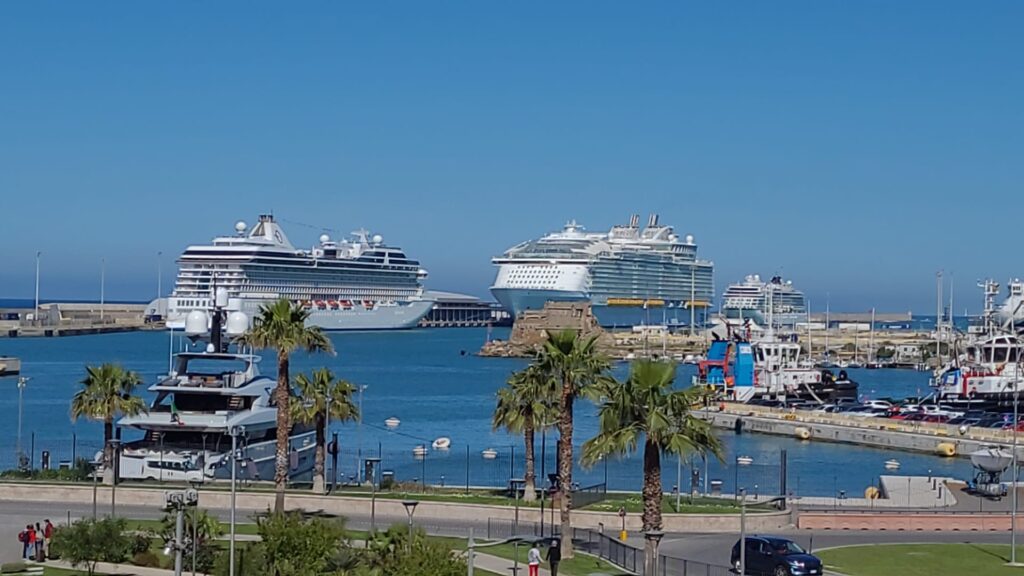
The other interesting ship on port today is this one. Not as large, but certainly unique:
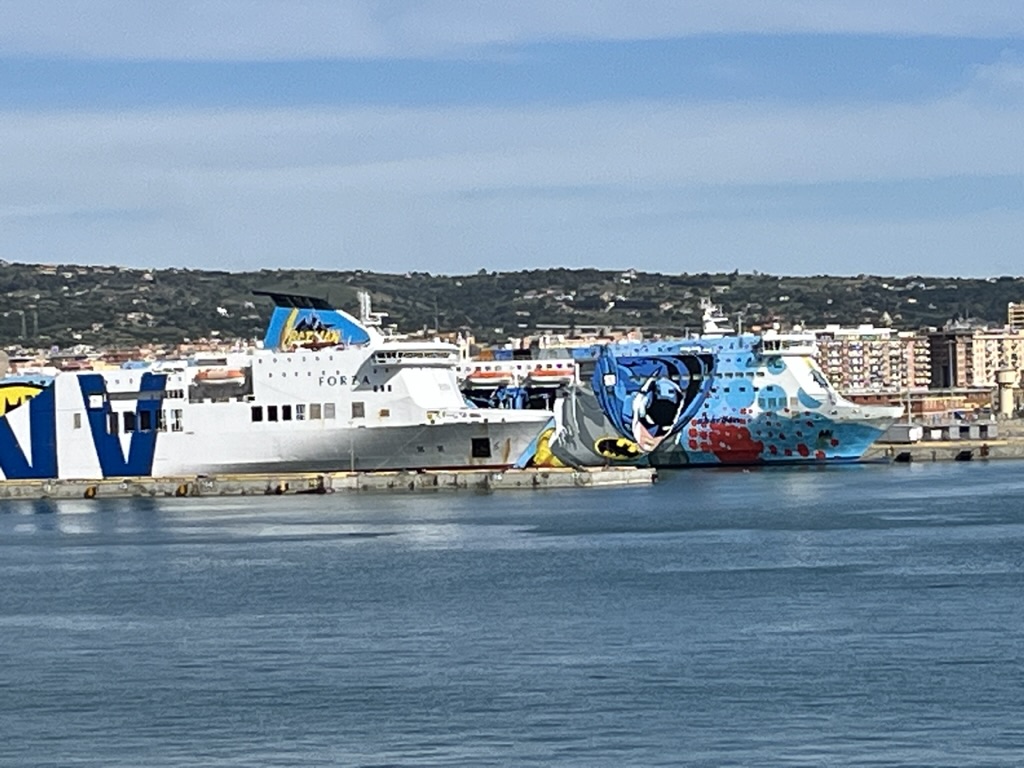
Anyway, we presented ourselves on the pier, met our guide Massimo, boarded the bus, and we were on our way for the 1 & 1/2 hour trip to Rome.
Catacombs
Our first stop was the Catacombs of San Callisto. The catacombs were in use from the 2nd century AD until the beginning of the 5th century and provided internment for over half a million people.
They were cut into the limestone in 5 separate layers over and area of about 37 acres.
Tours are conducted thru only a small portion of one layer. To prevent theft of “remains”, the bones from the tour area have been moved to other parts of the complex. FYI – the catacombs are at a constant 58 degrees and humid.
Unfortunately photography is not allowed within the catacomb itself. I have abided by that rule. However others have not – so I have included a few illicit photos to give you an idea of what we saw.
A note about construction of the catacombs. Due to really poor planning on the tour guide’s part, we were unable to hear much of what the catacomb guide said, or what he was talking about. But one item I did hear and found interesting had to do with how the really tall aisles were constructed.
They started with a tunnel and cut out niches in the sides. When those were full, they dug down a bit and cut out more niches. They kept digging down until some of the resulting passageways are as as 30 feet high.
On to Rome
Emerging from the darkness, we boarded the bus and continued on to Rome. Arriving in the city, we took a bit of a “scenic drive” taking in a few of the sights.
St. Peter’s and Wanderings
Our driving tour ended in the Vatican City parking garage. From there we took tunnels and escalators and emerged onto St. Peter’s Square.
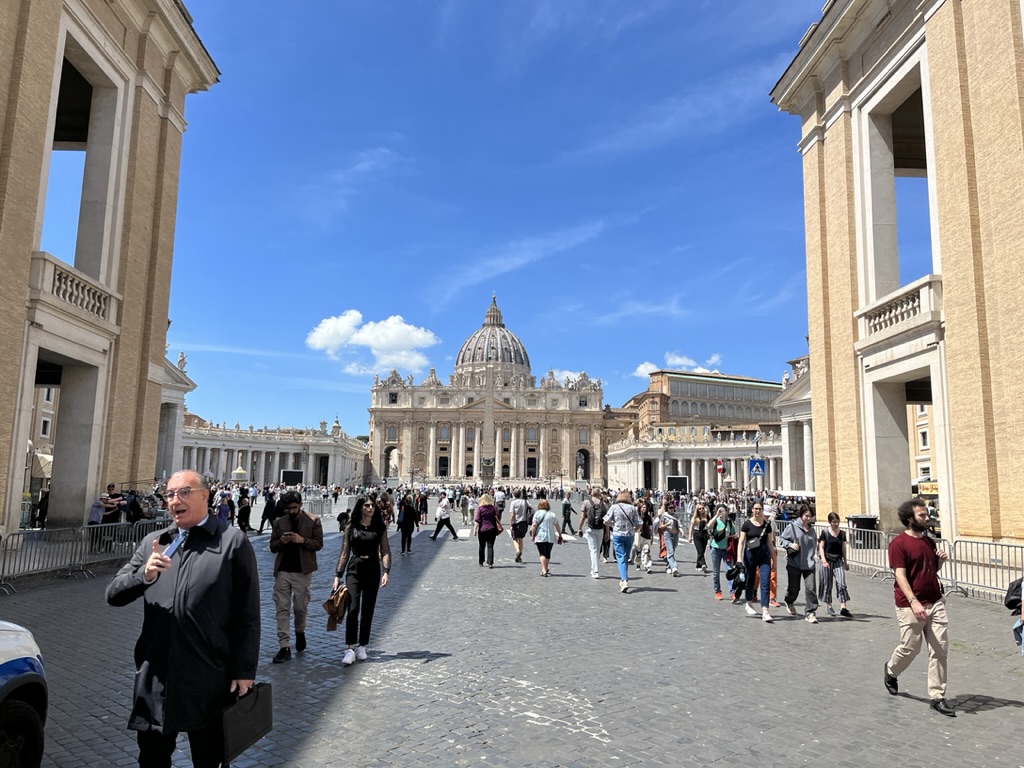
At this point Massimo turned us loose, giving us a meeting time and location (and directions to the nearest WC facilities).
We had 3 hours to explore.
So we had lunch.
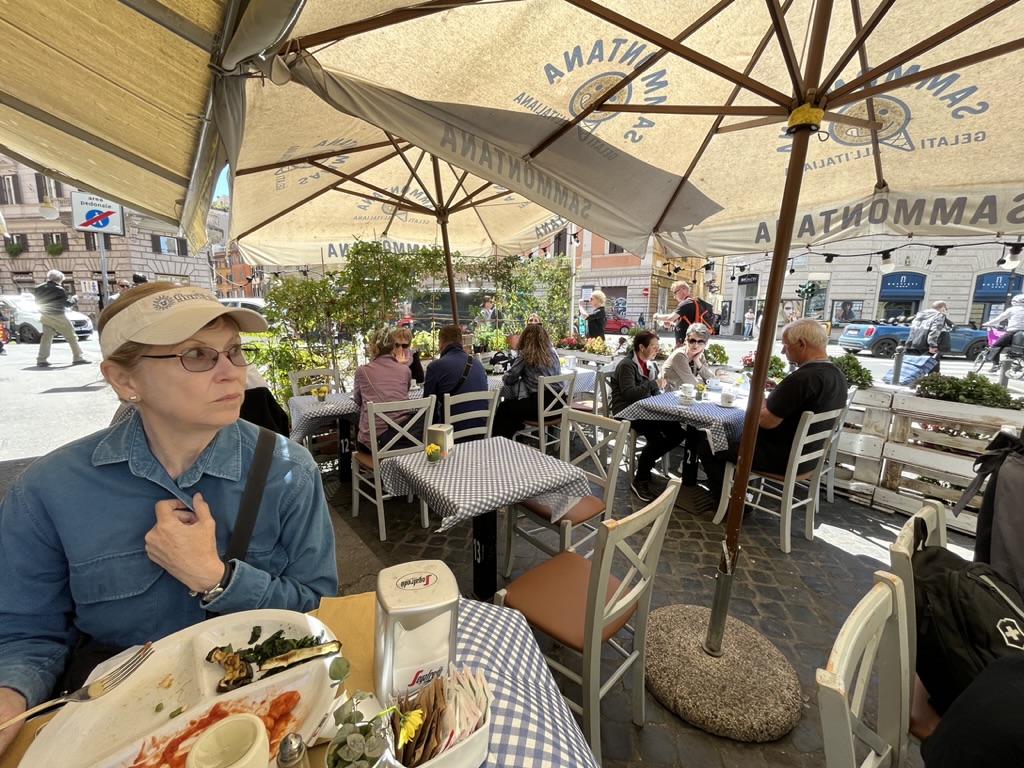

We wandered a bit until we found a nice little street-side cafe with a friendly waiter who served us “Arnold Palmers” in a can and introduced us to Gnocchi. I had lasagna that tasted like it came from his mother’s favorite recipe but I also helped with the Gnocchi and the really good steamed spinach.
Thus fortified we set out on our second goal – getting lost in the back streets of a medieval city. Check. Along the way we came across the Biblioteca Vallicelliana. This important library dates to 1565 (The current building is from the first part of the 17th century.) and contains about 130,000 volumes of significance to the history of the church.
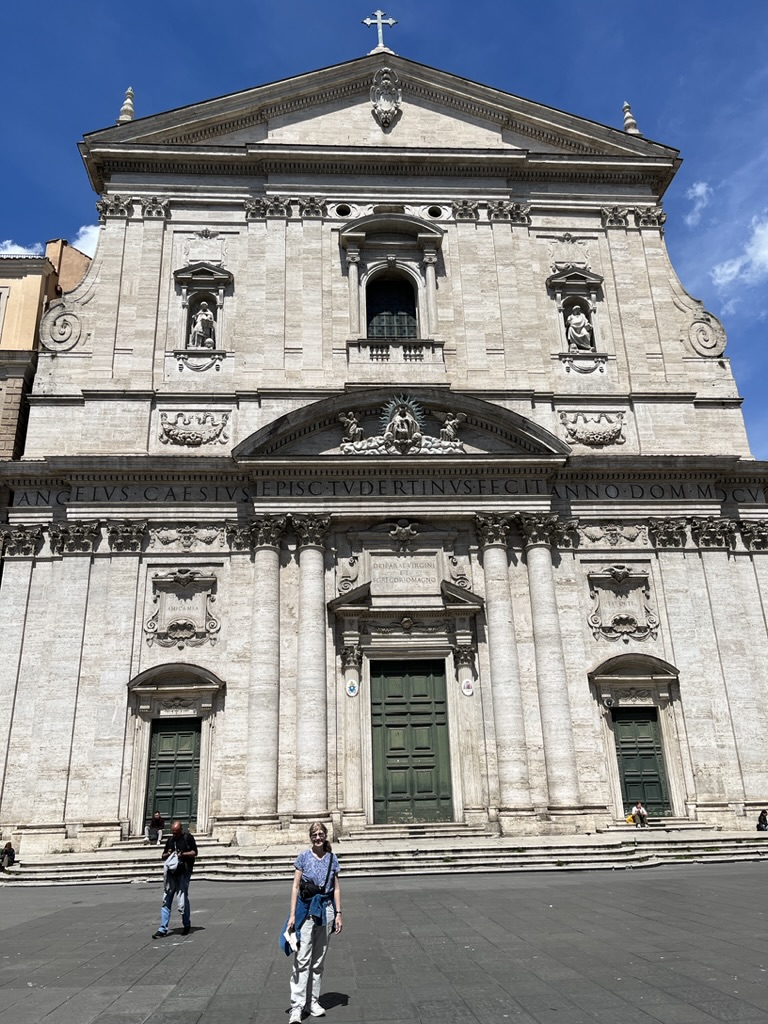
We eventually found ourselves on the map again and made our way to the Fountain of the Four Rivers. This Bernini fountain in the Piazza Navona was designed in 1651 and represents the four rivers of the four continents through which the authority of the Papacy had spread: Danube of Europe, Nile of Egypt, Ganges of India , and Rio de la Plata (North and South America were considered to be one continent.).
From there…

…to the Pantheon.
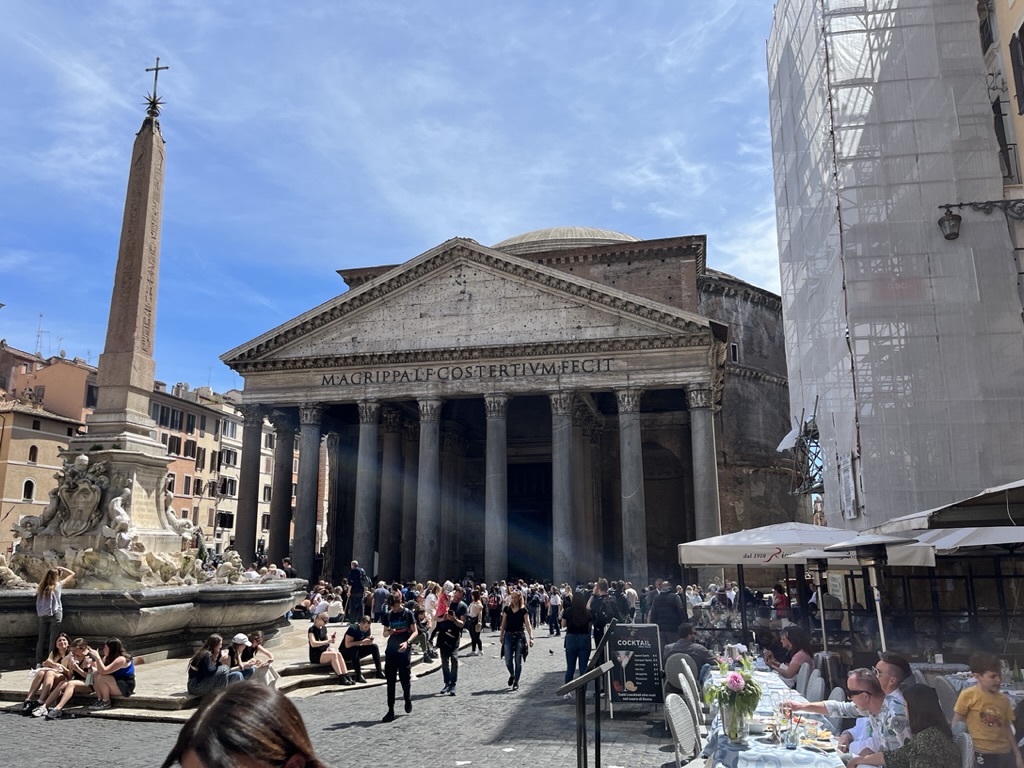
Sadly we didn’t have time to stand in line to see the famous “oculus” (open circle in the dome which provides most of the light). Next time for sure.
One interesting thing about the trek from the Fountain to the Pantheon is that you walk past the official residence of the President of the Roman Senate. Which means that you will encounter, in addition to dark suits and ear pieces, interesting uniforms.
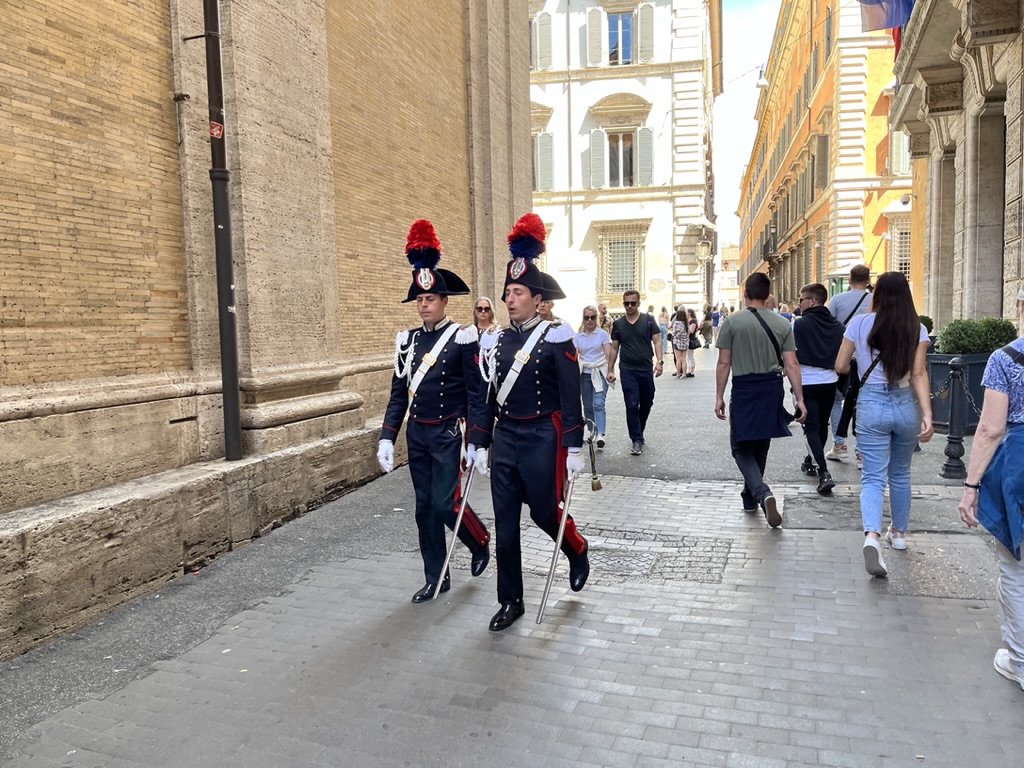
Another sight you will see on the streets of Rome is an inscription on utility covers:
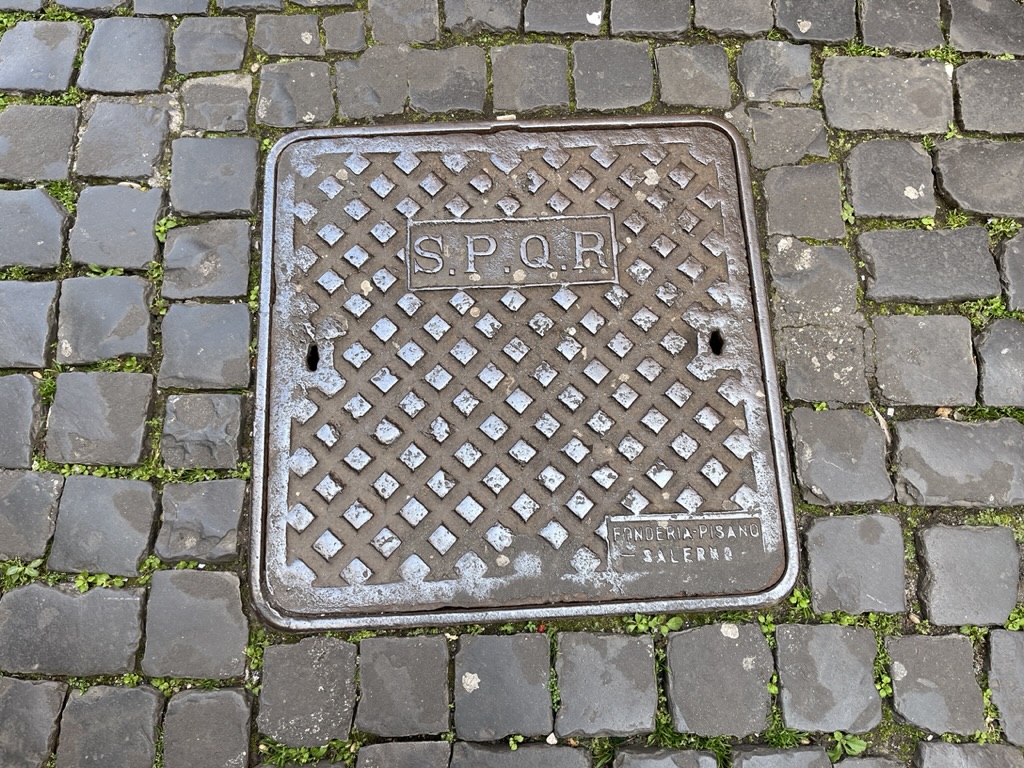
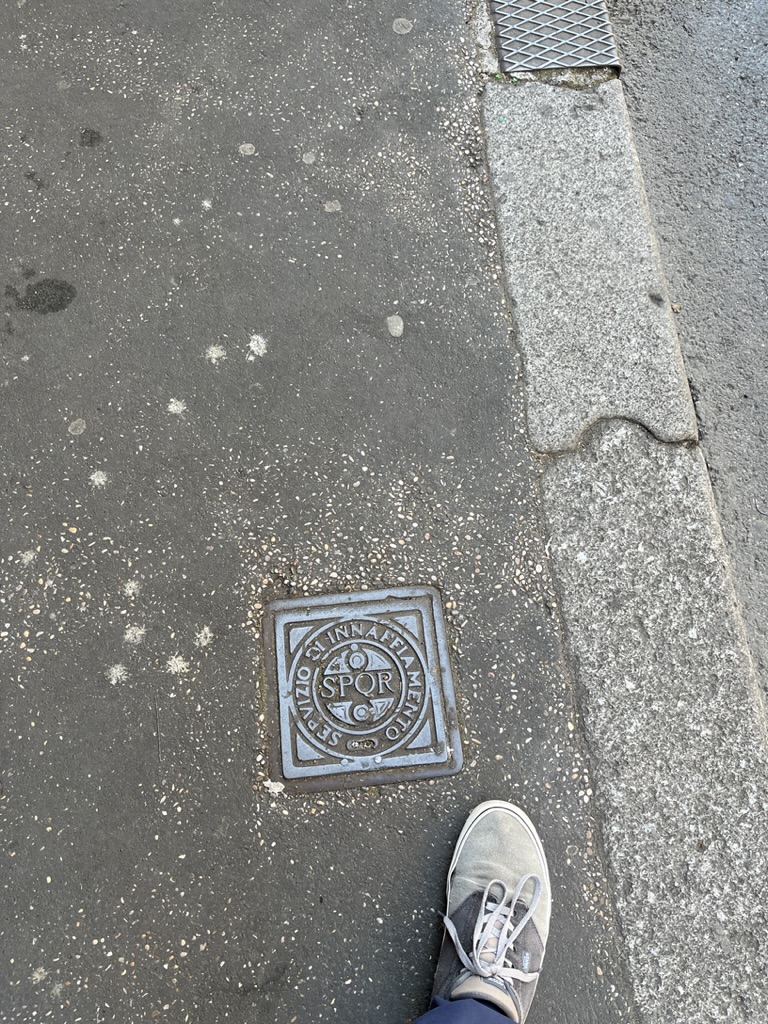
We arrived back at the meeting point with just enough time for a restroom facilities stop before taking a couple of final photos and heading back to the bus for the long return drive – most people napped.
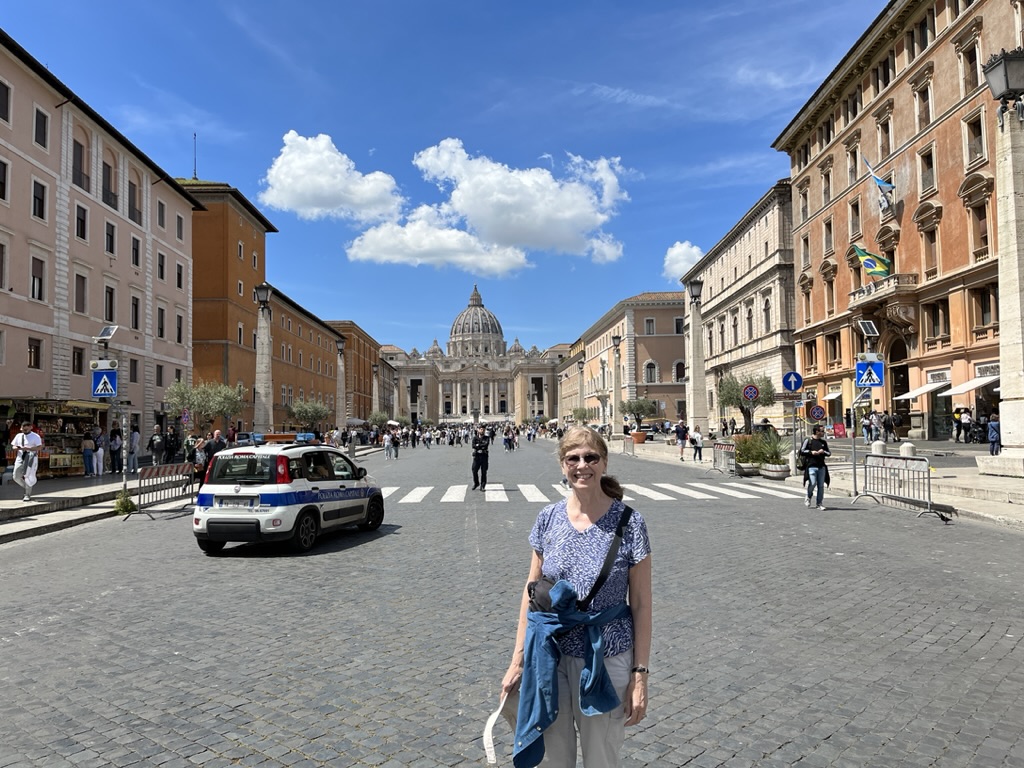
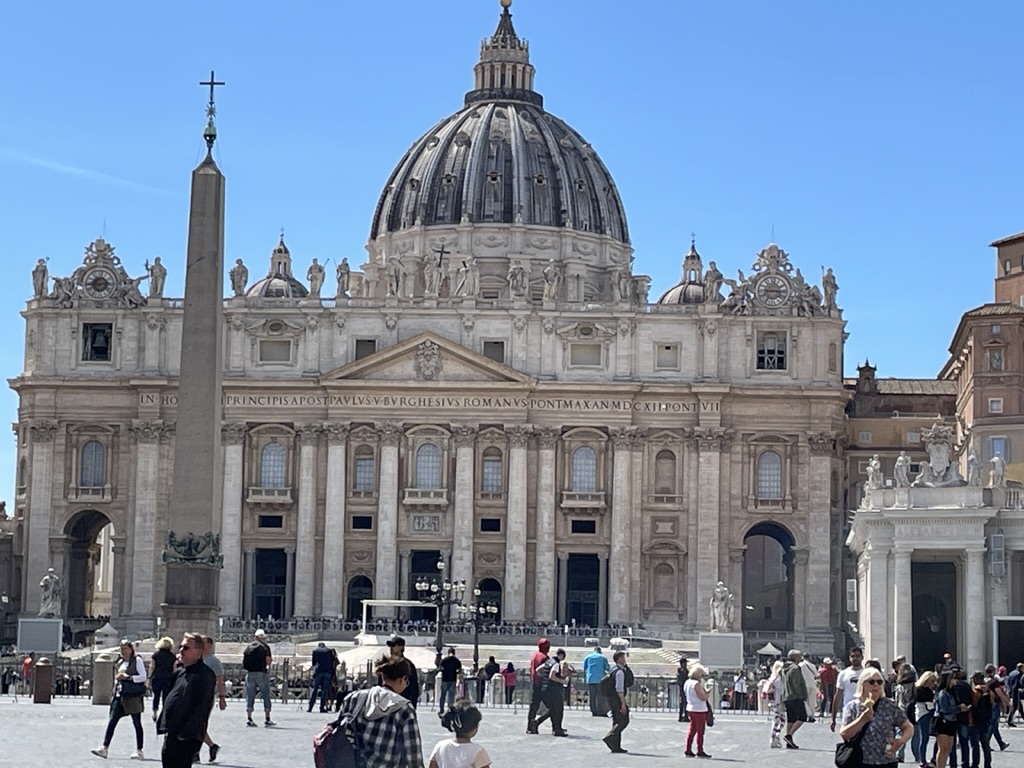
Back at the ship we blogged a bit and watched the port talk for Barcelona before dinner and BBB (13/18 – still only good enough for 3rd place)
Tomorrow is the last port day in this run.
Our excursion call isn’t until 11:00 so we’ve got time to get back on the exercise routine before tromping all over Monaco. Wish us luck.
R
Cheryl’s Factoids:
- Timeline of Rome: MONARCHY 753-509 BC (various tribal kingdoms brought together under a monarchy)/ REPUBLIC 509-27 BC (ruled by co-consuls elected each year, until Julius Caesar became too powerful)/ EMPIRE 27-476 AD (Pax Romana).
- ROMULUS AND REMUS: The legend of Romulus and Remus gave Romans a divine ancestry since the twins were said to be the offspring of the god Mars and a princess from Alba Longa (founded by Aeneas from Troy). After their birth, the king ordered them killed because of a prophesy that one of them would kill him. They were placed in a basket and put into the Tiber River – left to die from exposure. The boys were found by a she-wolf called Lupa, who nursed them in her lair in Palatine Hill until they were found by a shepherd and his wife, who raised them as shepherds. The twins survived and killed the king when they grew up. Romulus and Remus co-founded Rome. In an argument, Romulus killed his brother Remus, and became the first king of Rome. Romulus picked the Palatine Hill, a hill near the Tiber River for the location of the small settlement of Rome.
- Julius Caesar was born in 100 BC and claimed to be a descendant of the goddess Venus through the Trojan prince Aeneas and his son Lulus. Caesar commanded all of Rome’s armies, and won many battles that gave more land to Rome – including invading England twice. Even though Caesar was spreading Roman influence abroad, he did not get the Senate’s approval to embark on his conquests, and they considered his actions an act of war. Pompey (the co-consul) had grown envious of Caesar’s success in the Gallic Wars and also feared he had become too powerful. After Caesar was declared “dictator for life” in 44 BC, many of the senators decided to kill him. This led to the end of the Republic, as Julius Caesar’s heir (his great nephew Augustus/Octavius) routed out all the opposition and was declared Emperor in 27 AD. Augustus surpassed his great-uncle in power, establishing the beginning of the Pax Romana and founding the Roman Empire which lasted for nearly 1,500 years. (The Romans had invaded England and ruled over England for 400 years but in 410 AD, the Romans left England because their homeland was being attacked and Rome needed all their soldiers back.)
- Romans built over 10,000 miles of roads all across their Empire. With proper roads, the generals could calculate how many miles their legions could travel per day and plan in advance where legions could meet up to attack objectives or to send supplies. These roads are so well made, most can still be used today – you can see the ruts in the marble slabs made by wheeled carts using these roads over centuries of time. The Romans also invented a concrete that doesn’t crumble away – the secret of which modern chemists are still trying to figure out. Caesar created the Julian calendar in 46 BC, which was a reformation of the Roman calendar and took effect shortly after the Roman conquest of Egypt.
- The gladiator games were so popular that successful gladiators could become extremely rich and very famous. As a result, while most gladiators were condemned criminals, slaves or prisoners of war, some were freedmen who chose to fight.
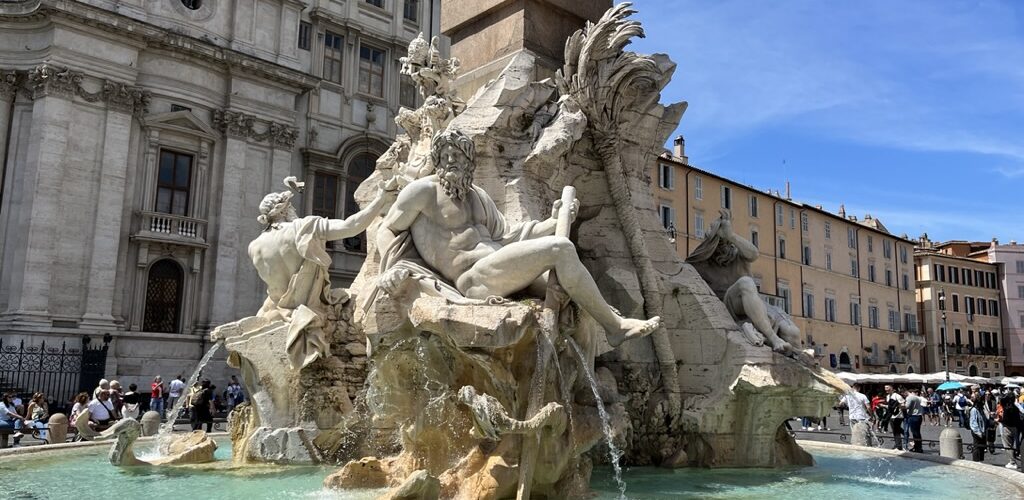
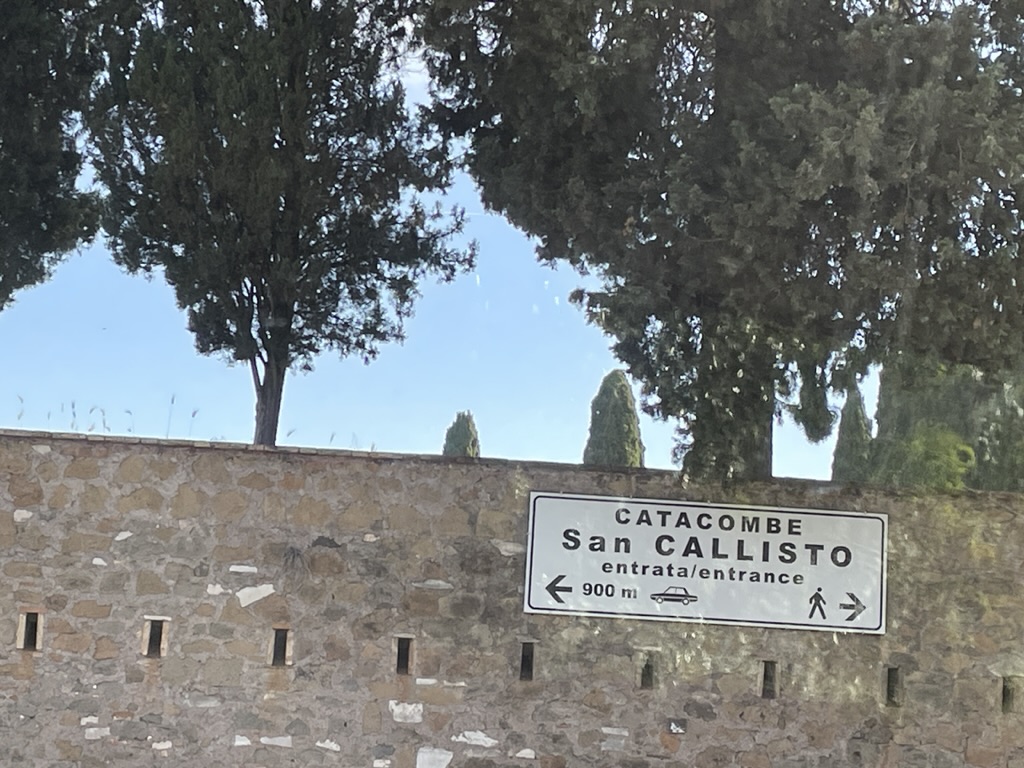
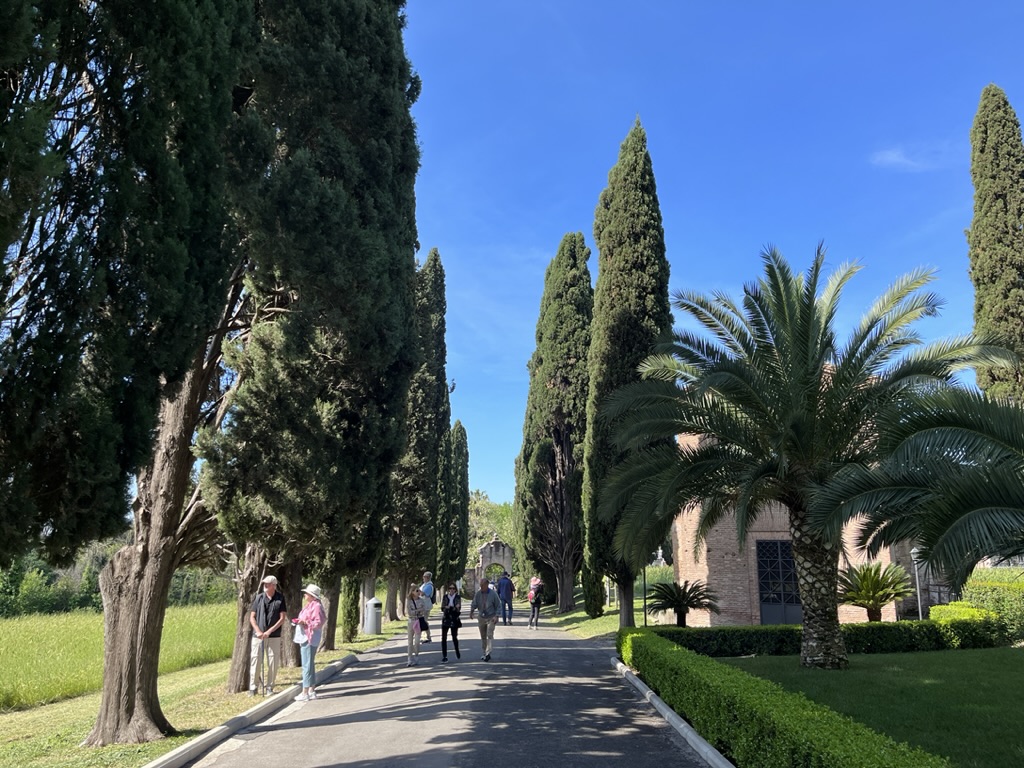
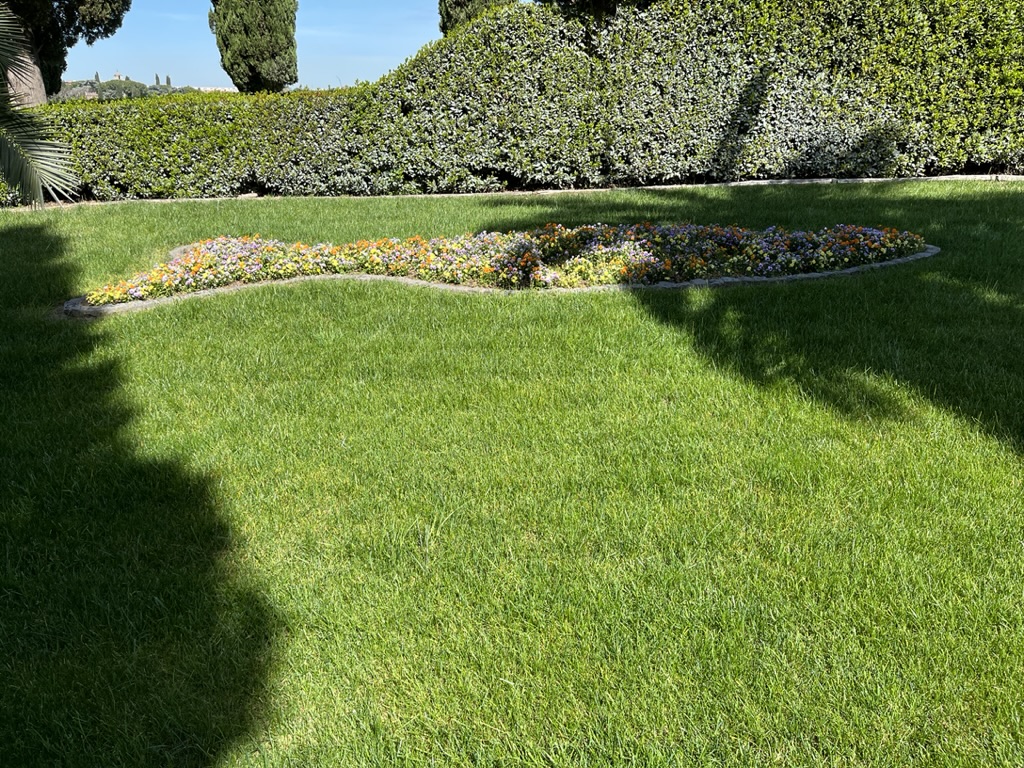
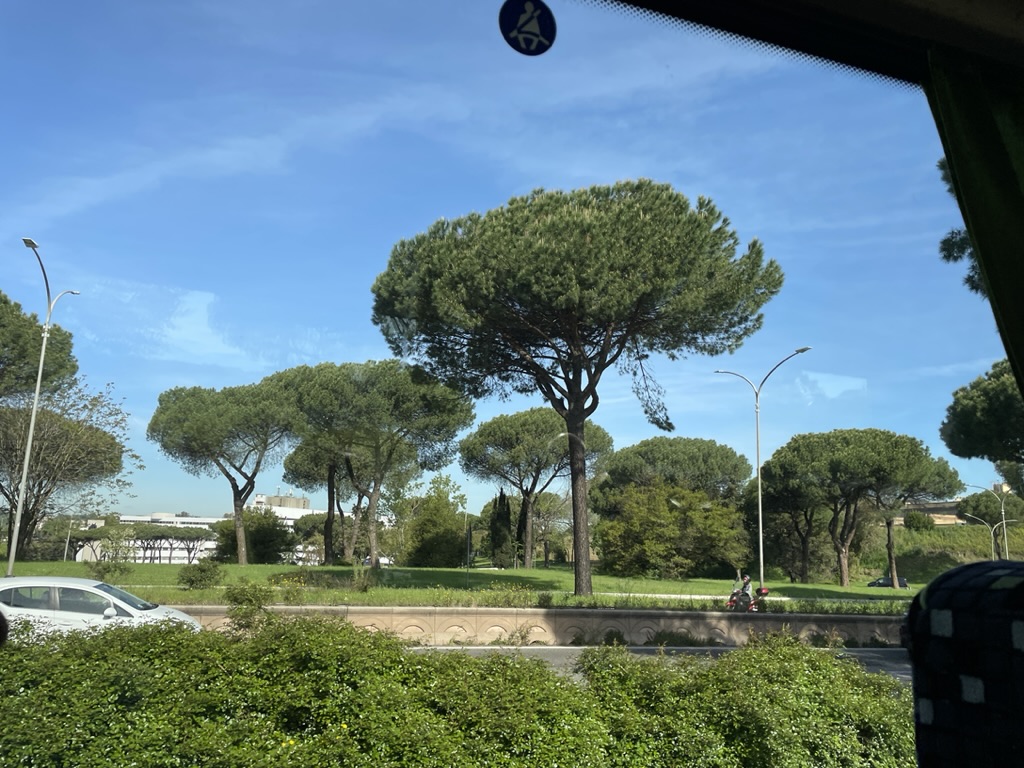
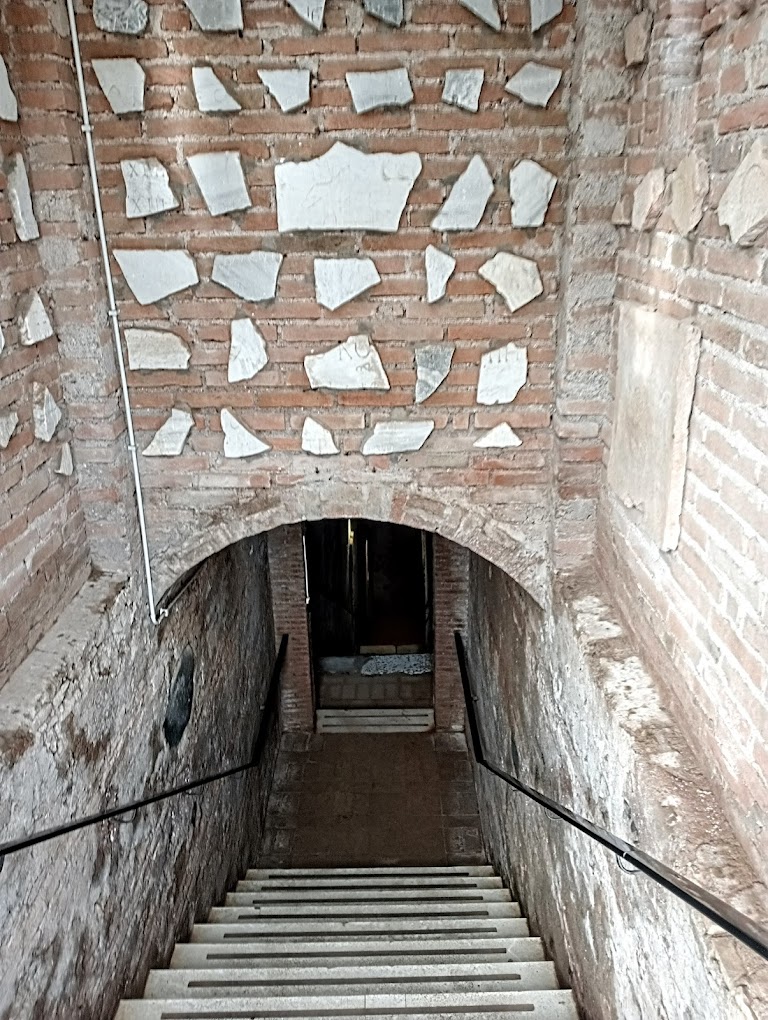
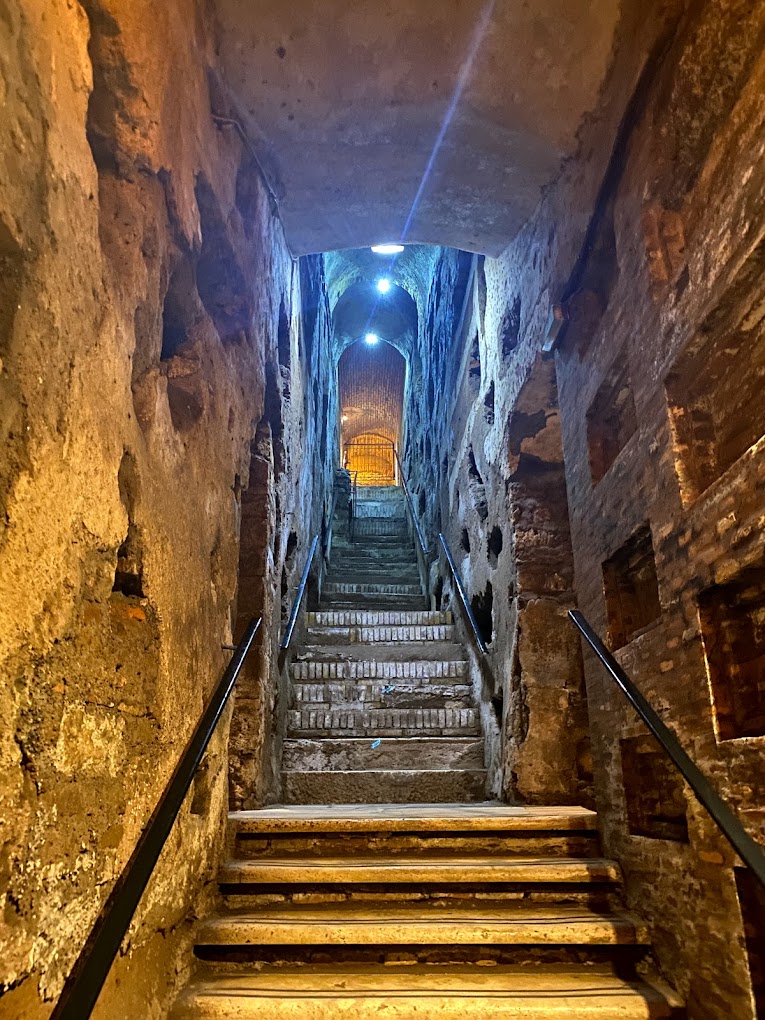
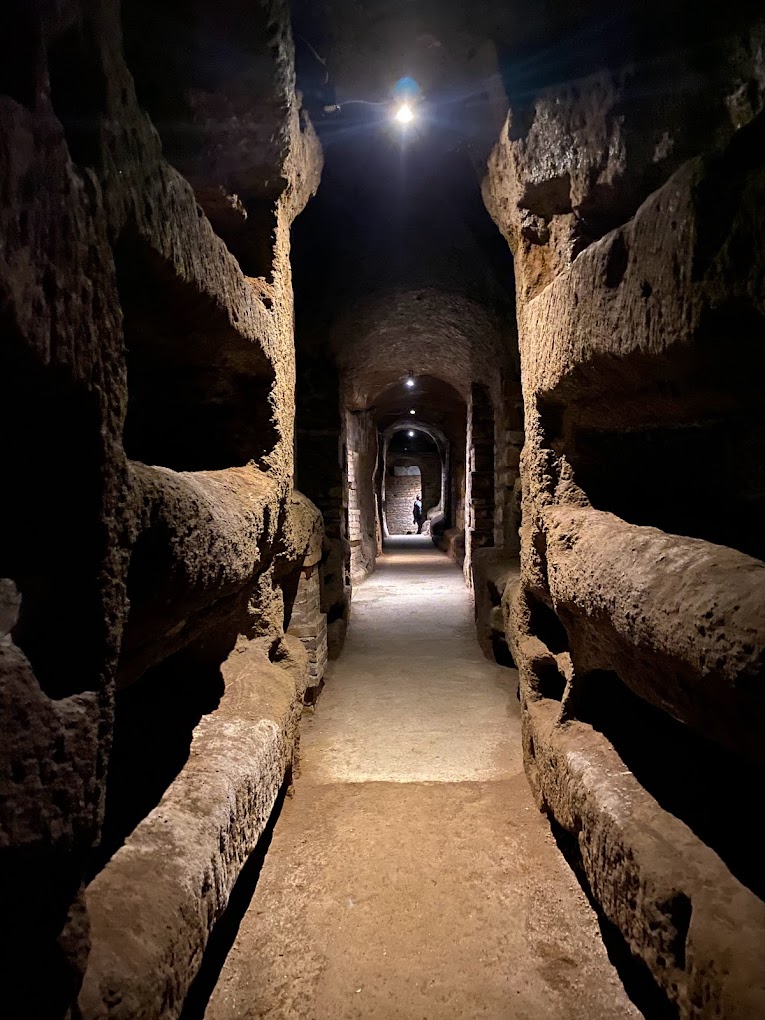
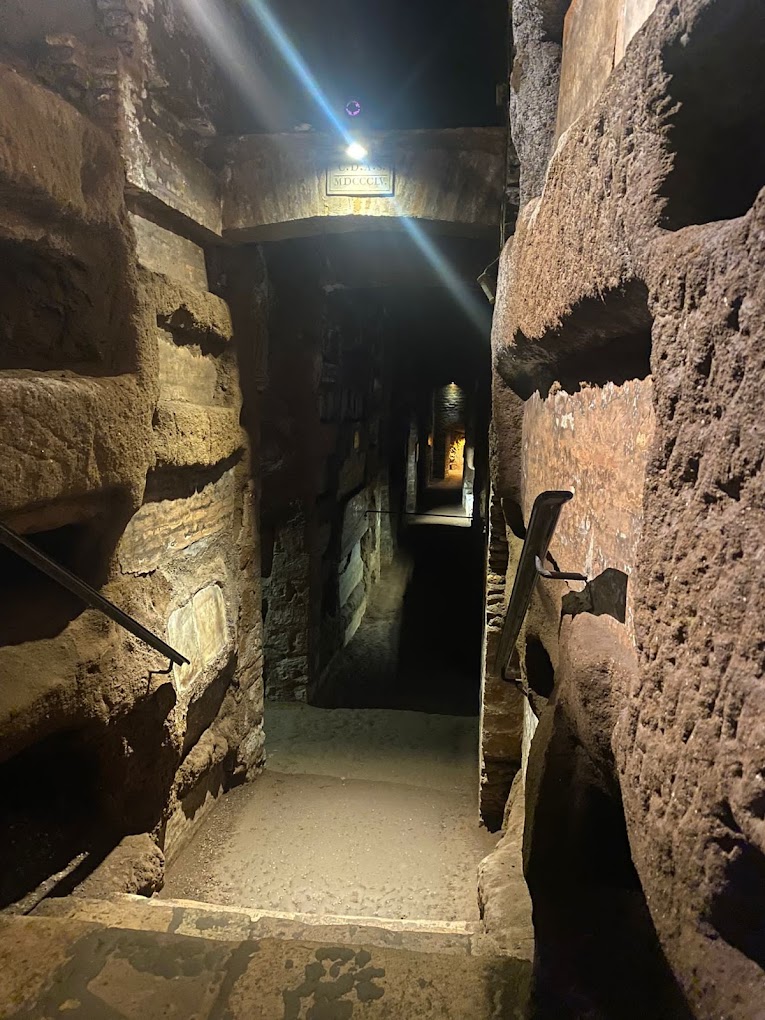
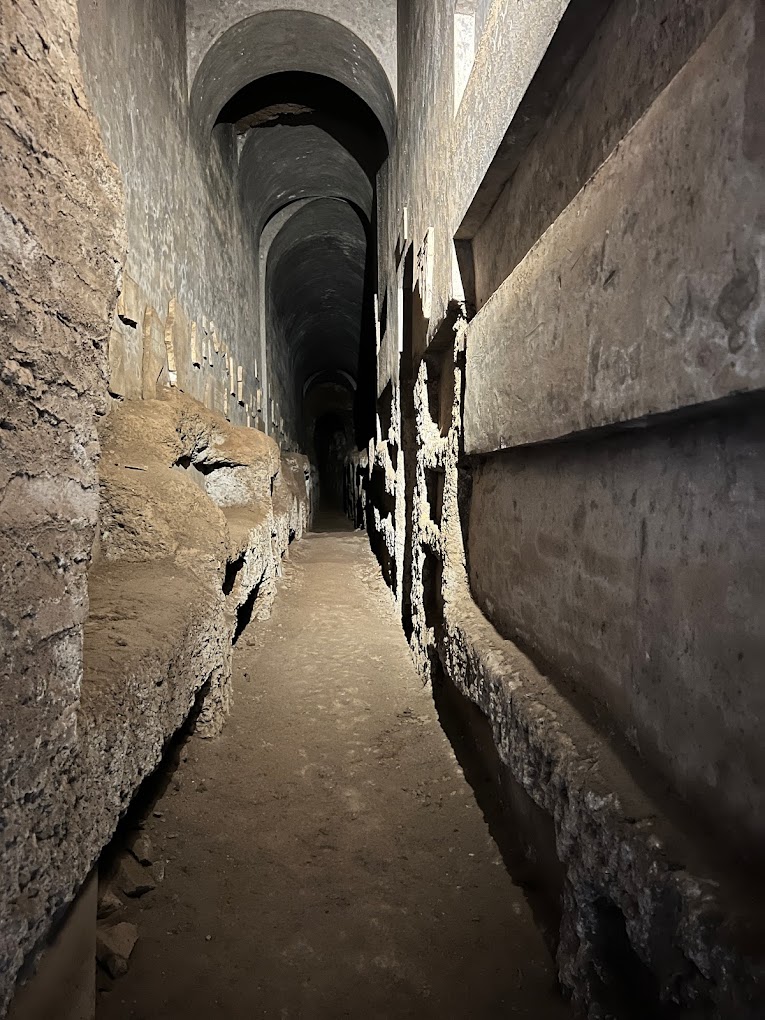
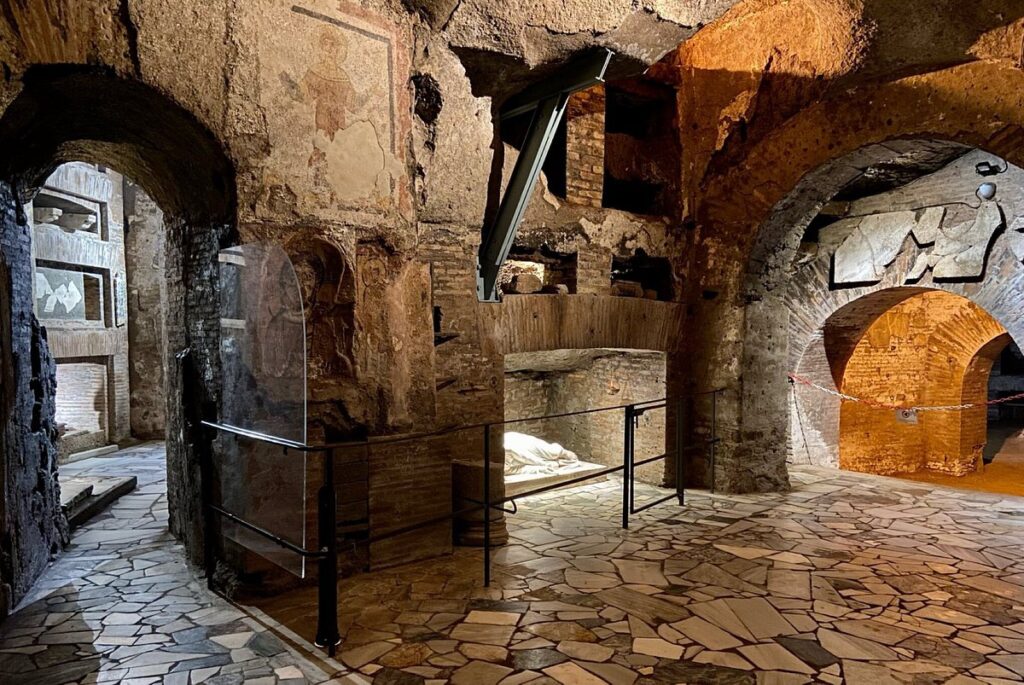
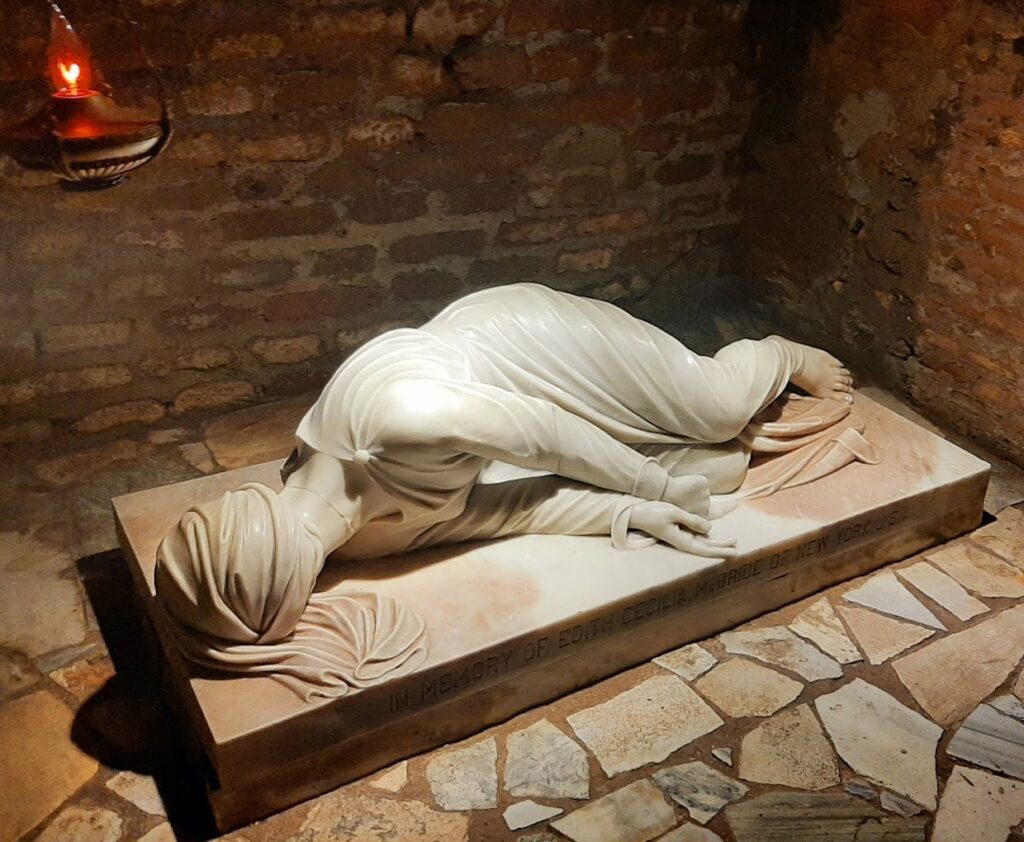
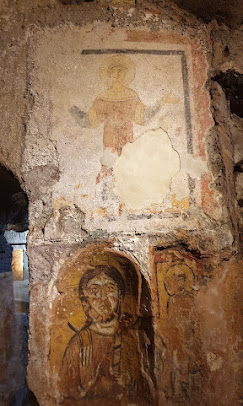
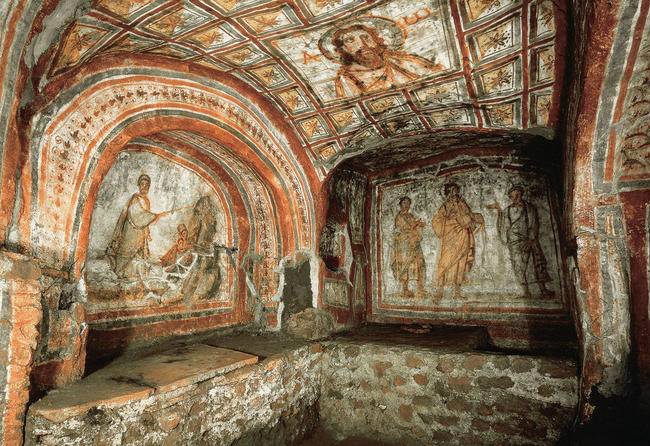
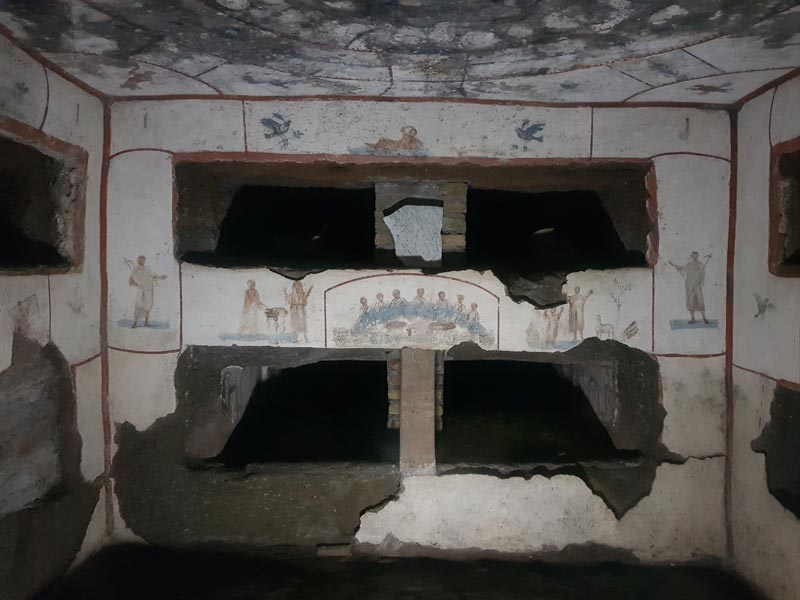
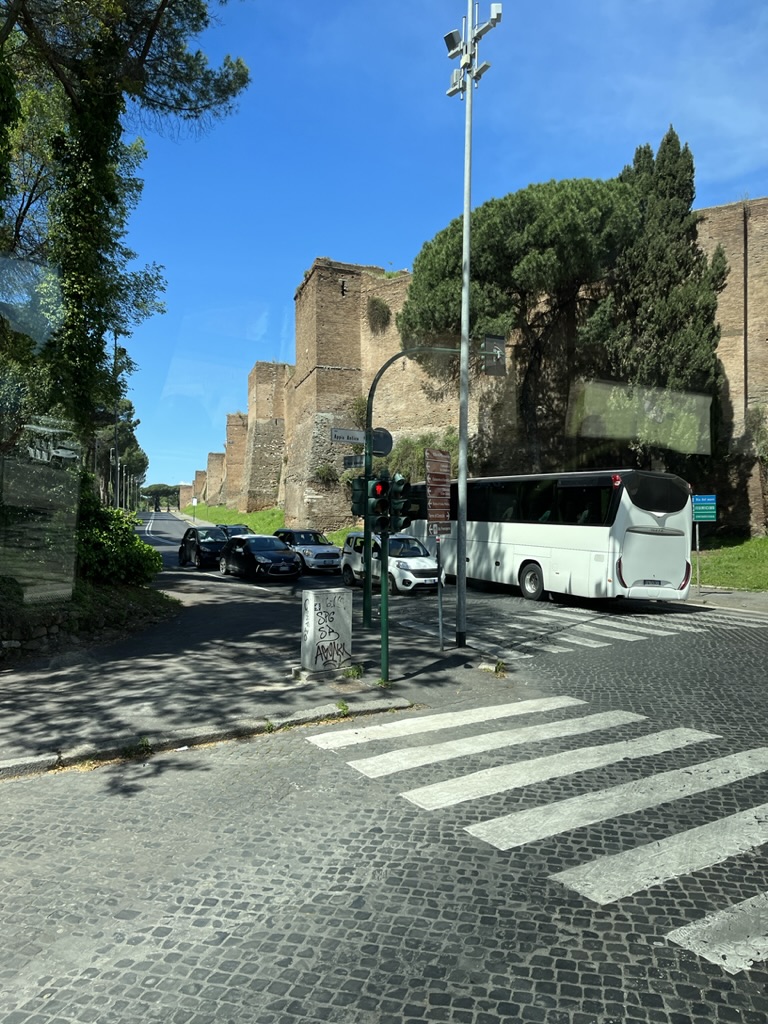
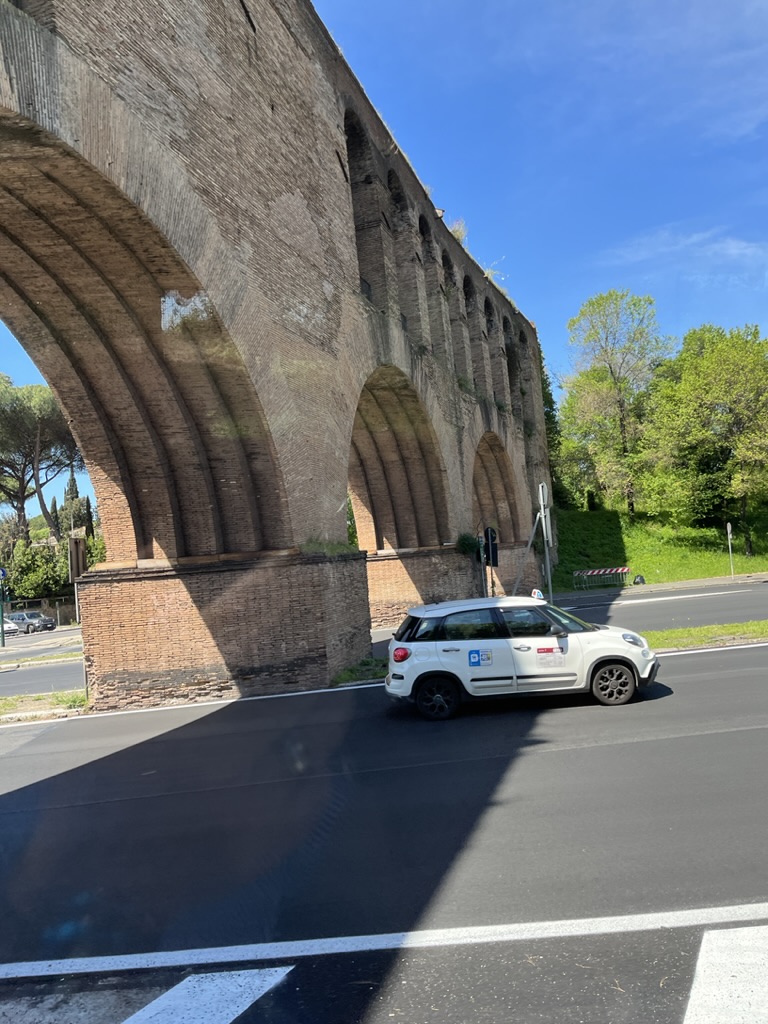
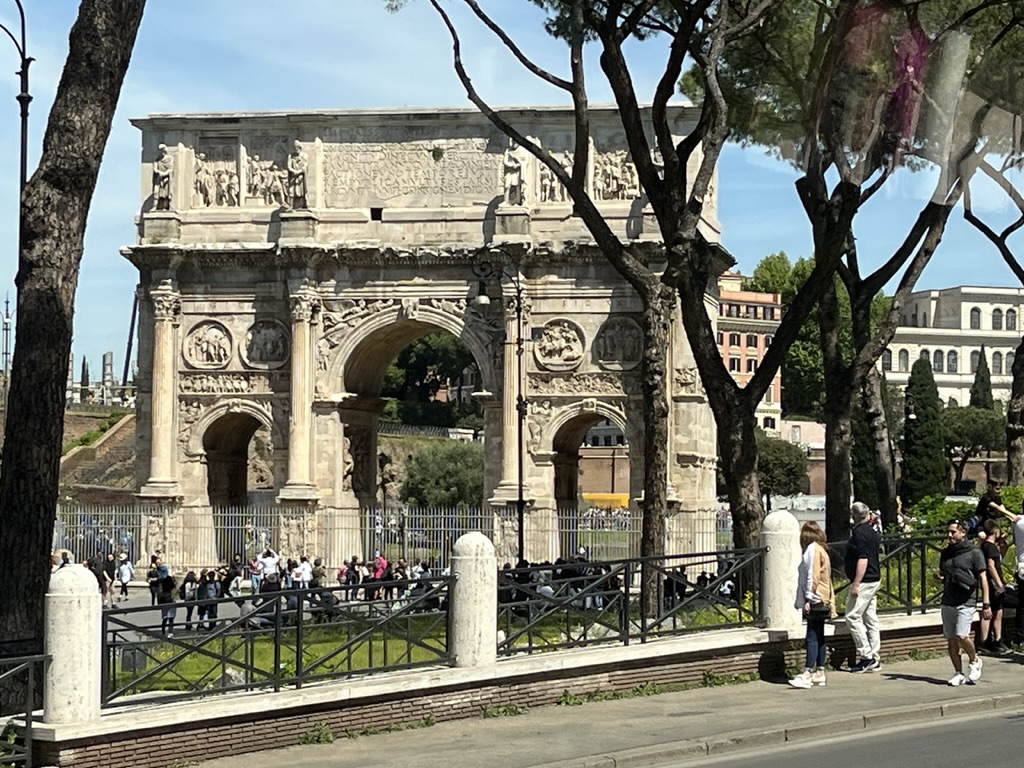
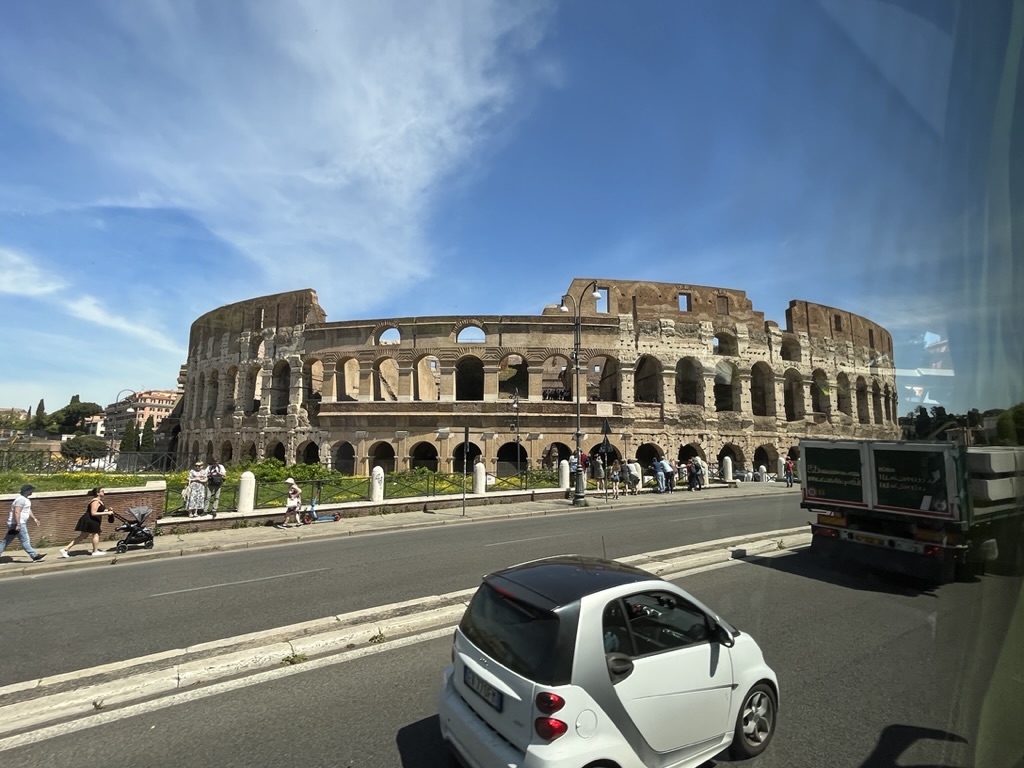
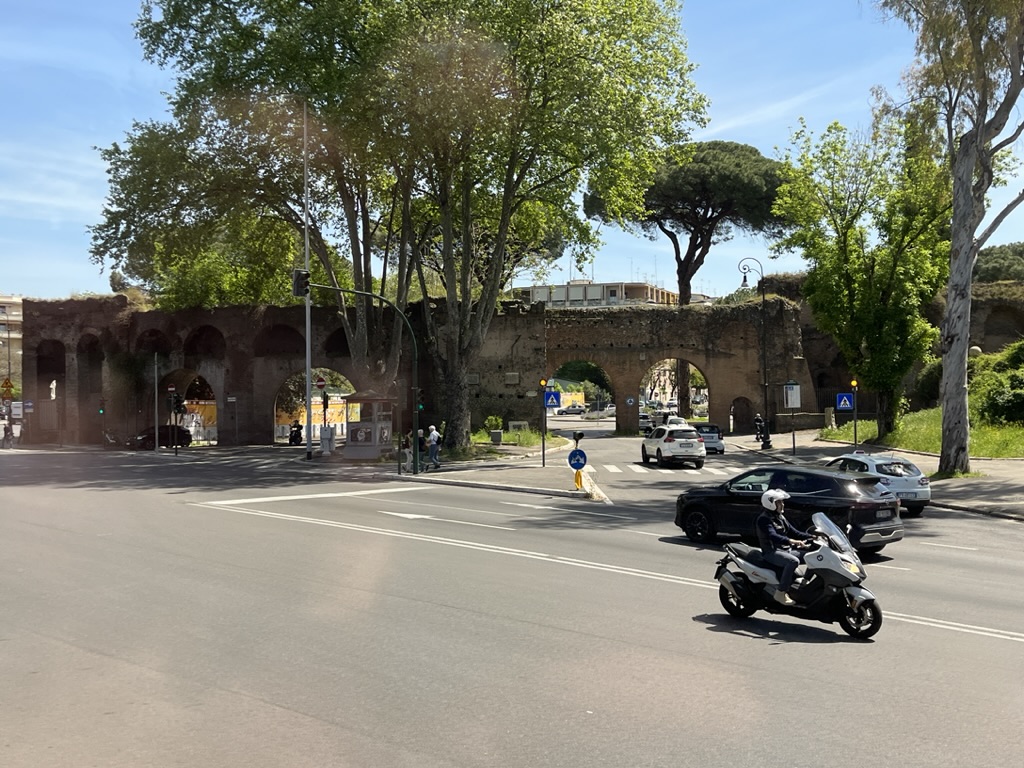
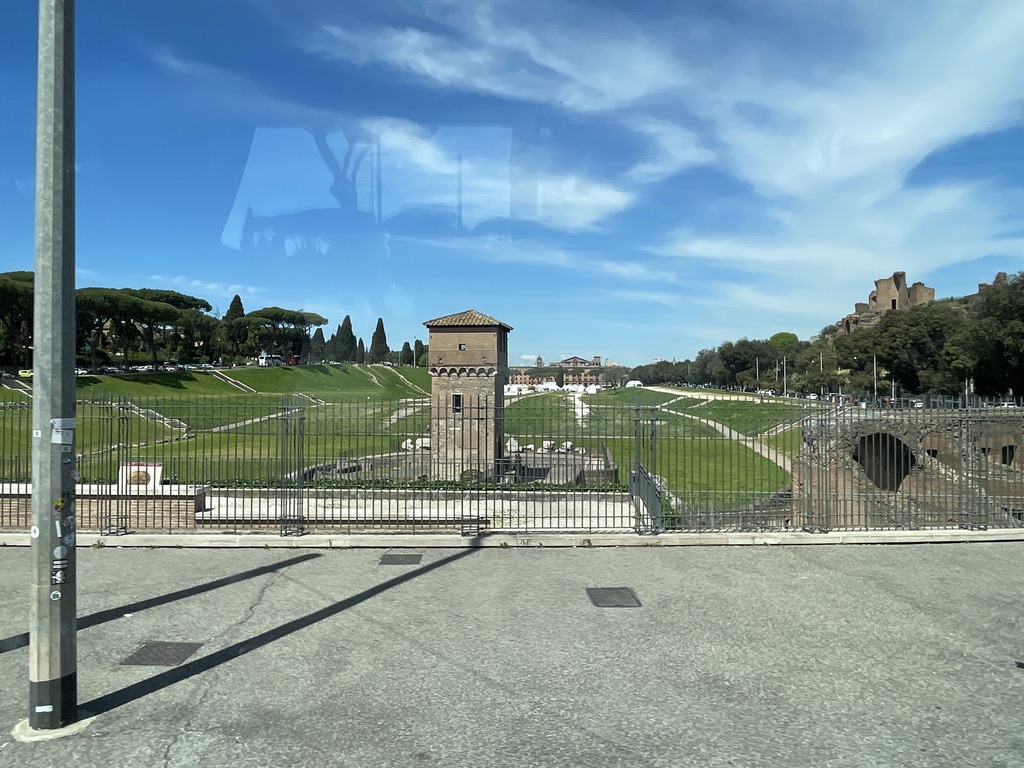
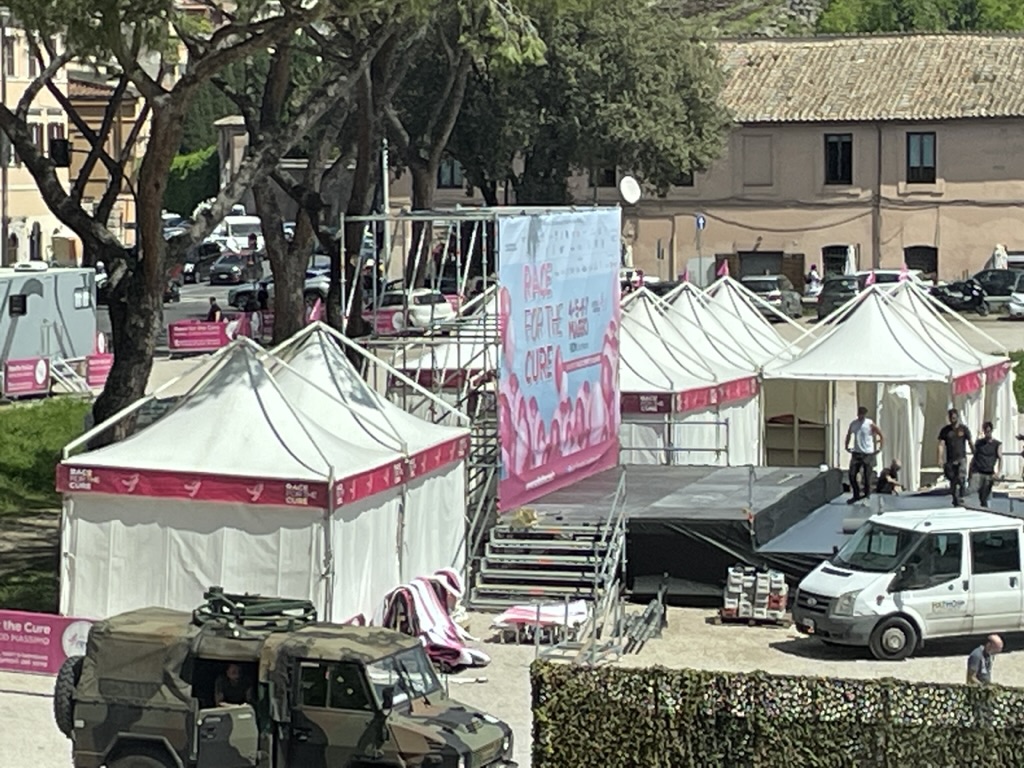
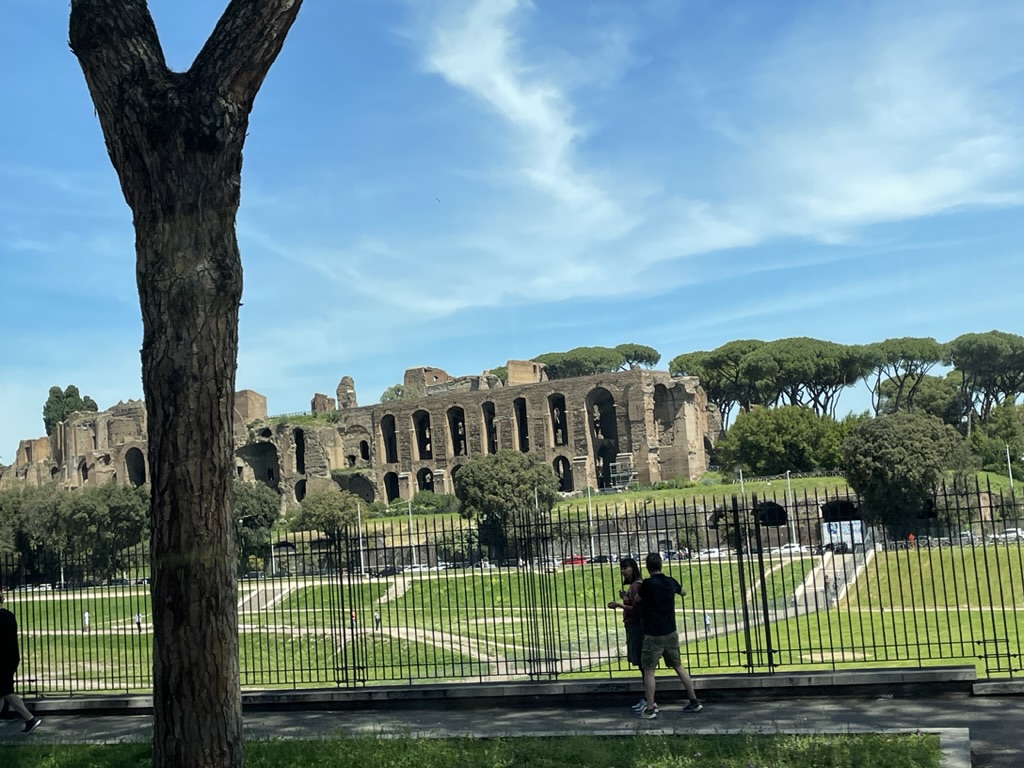
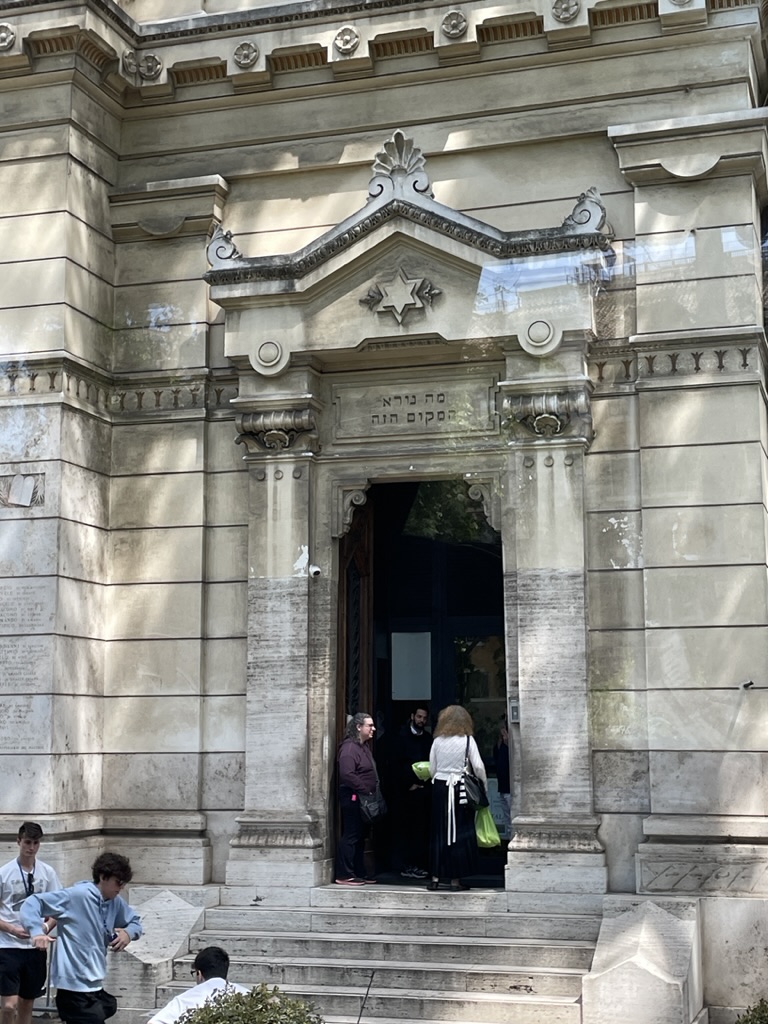
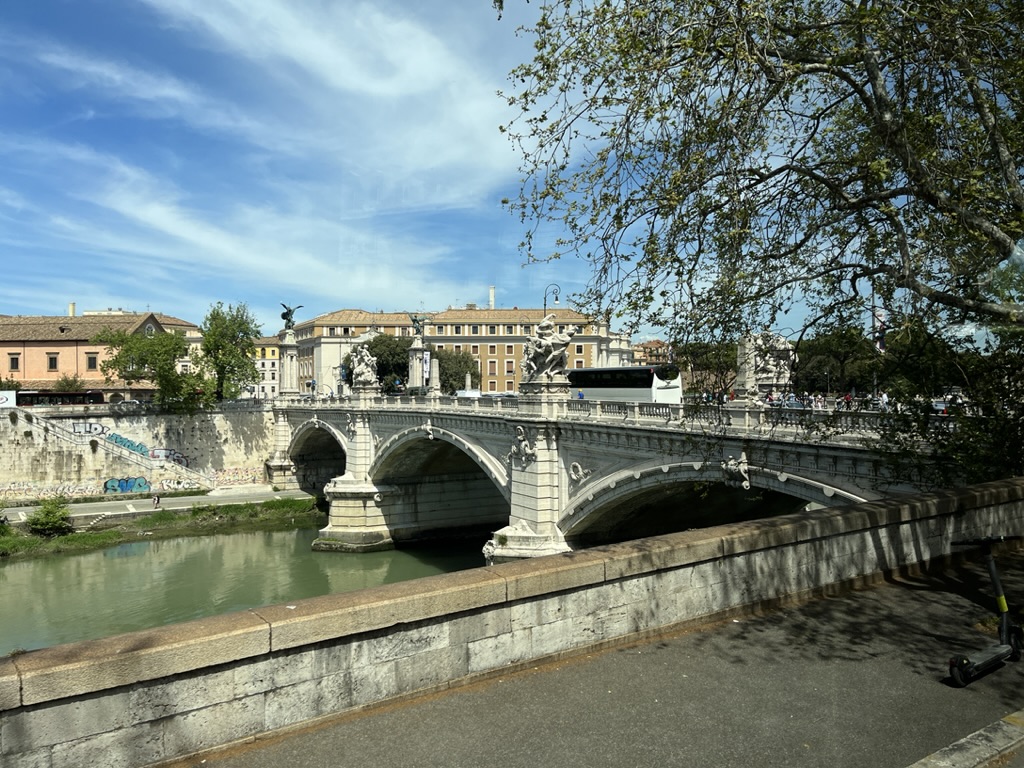
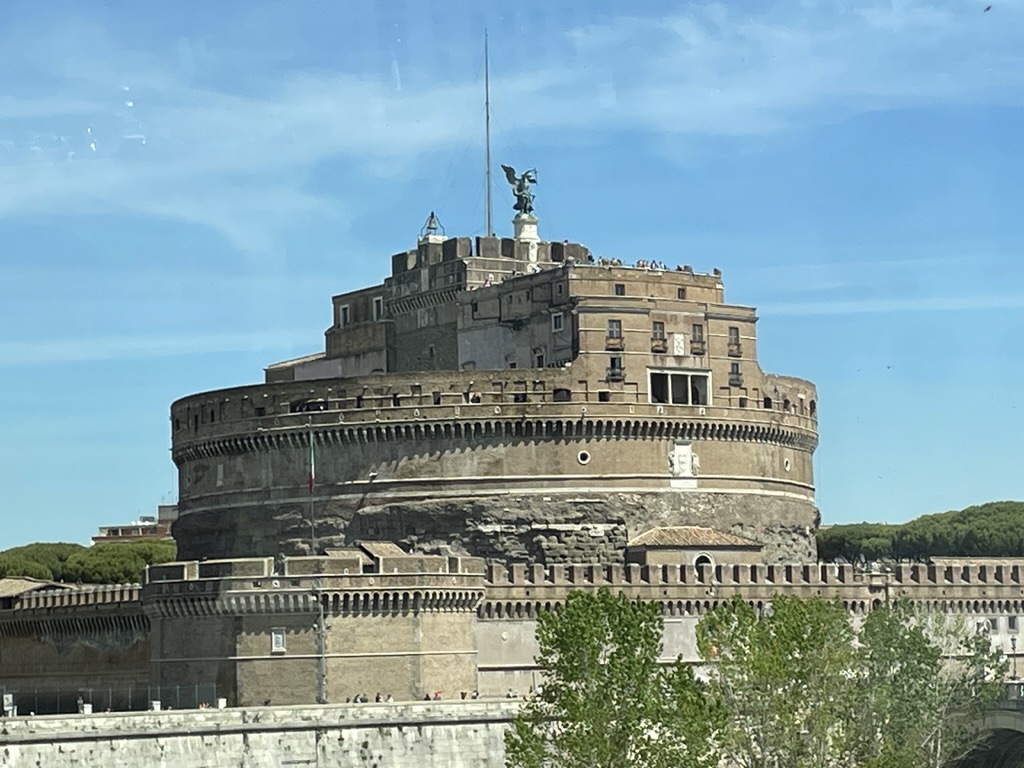
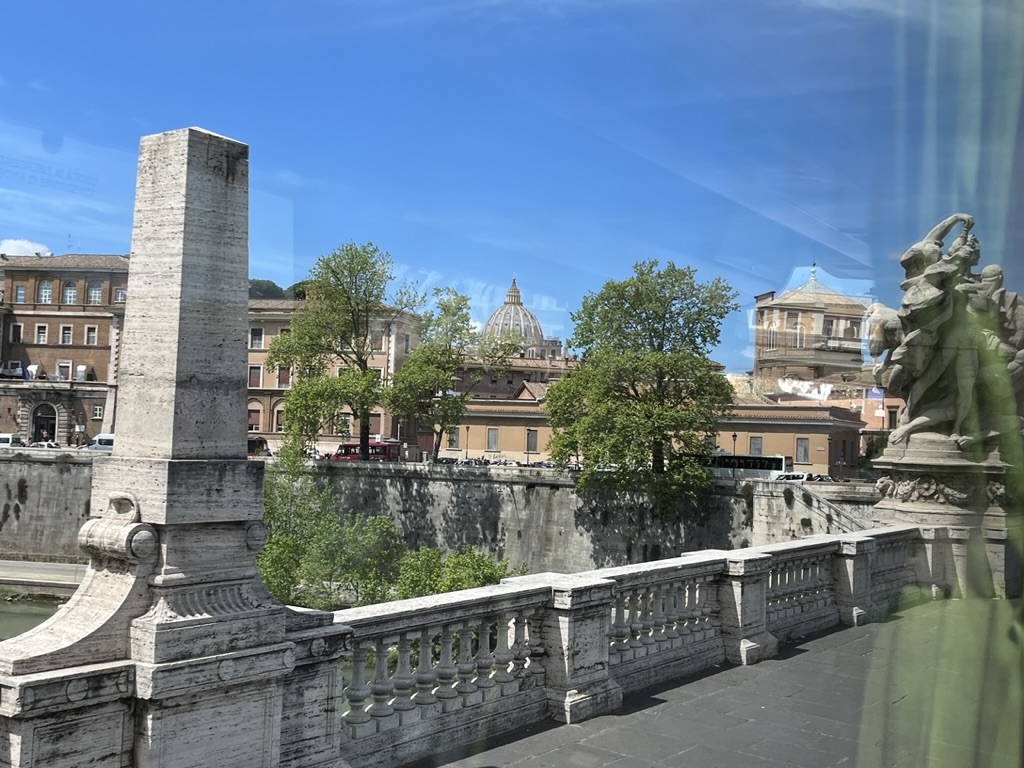
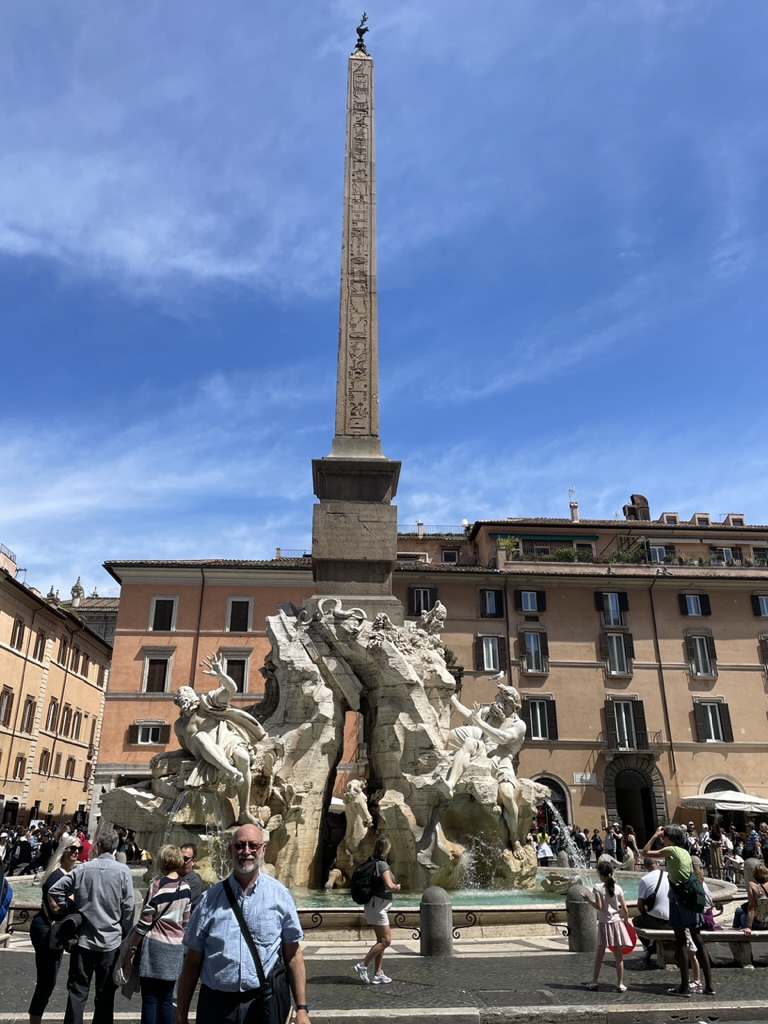
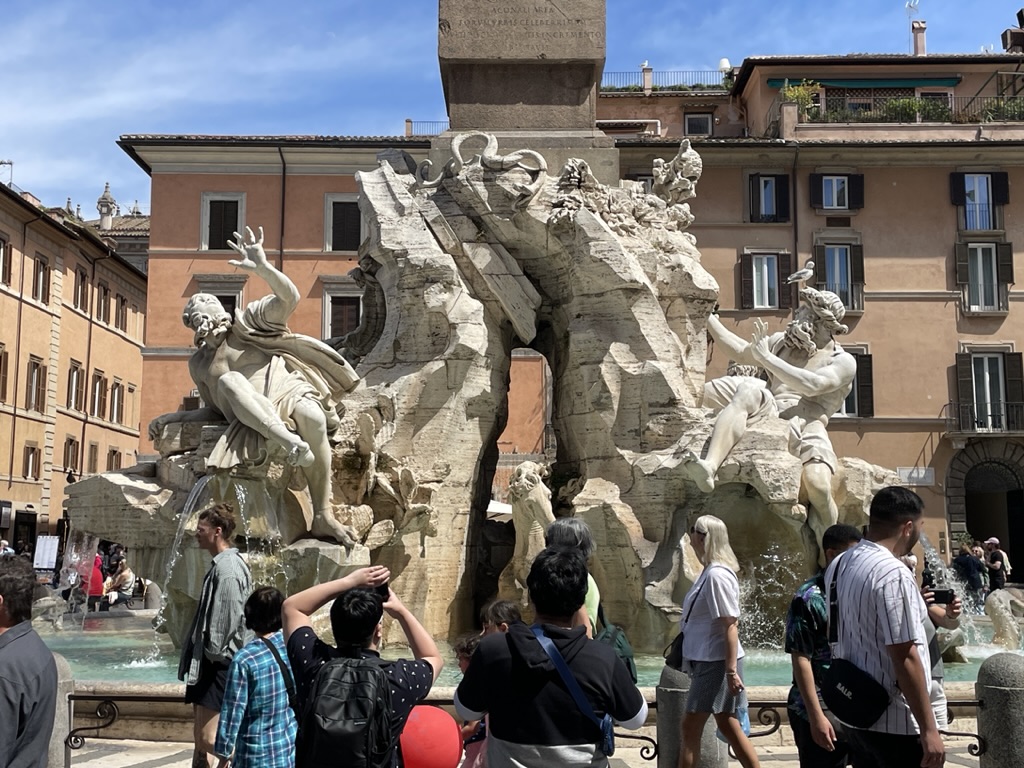
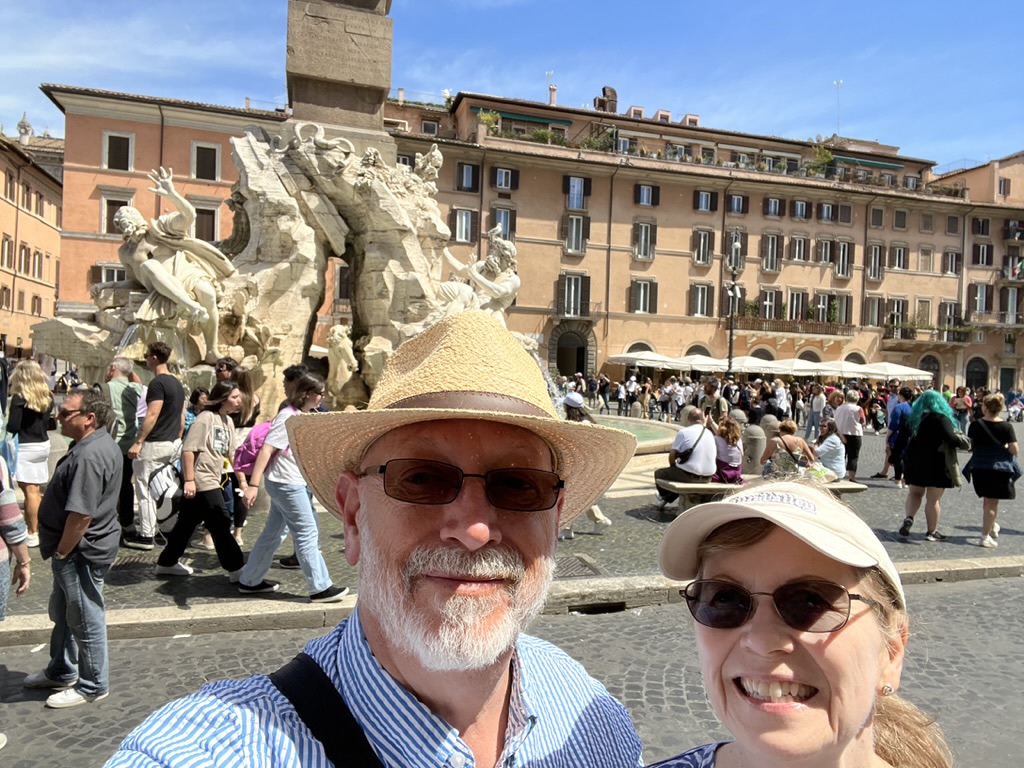
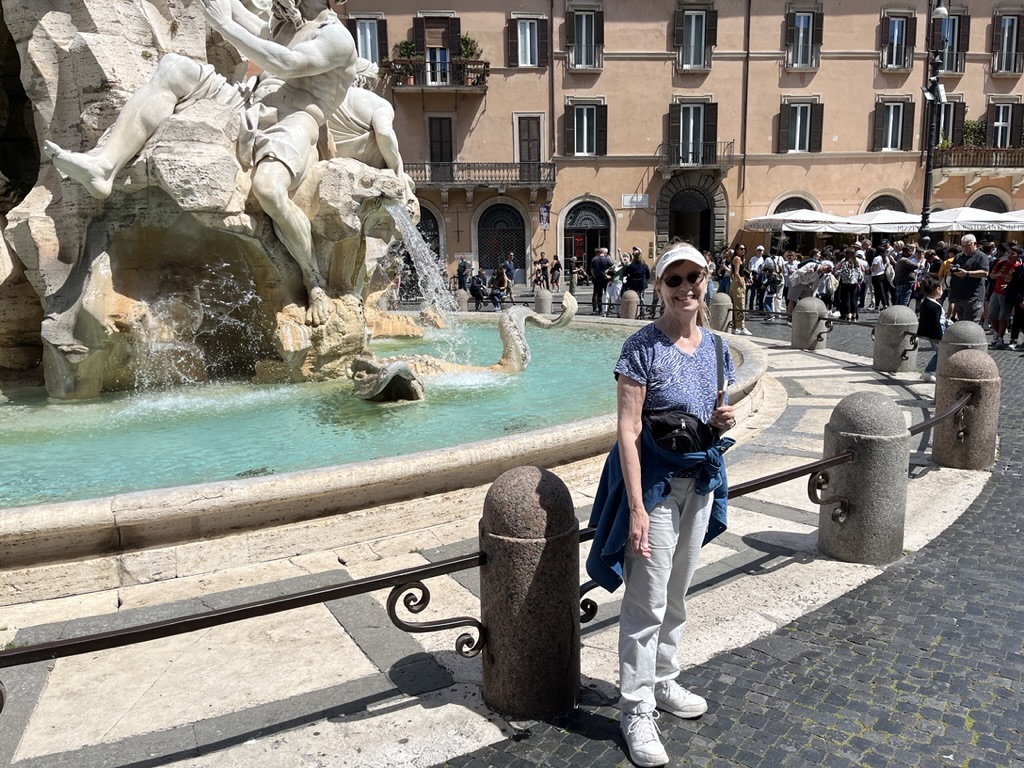
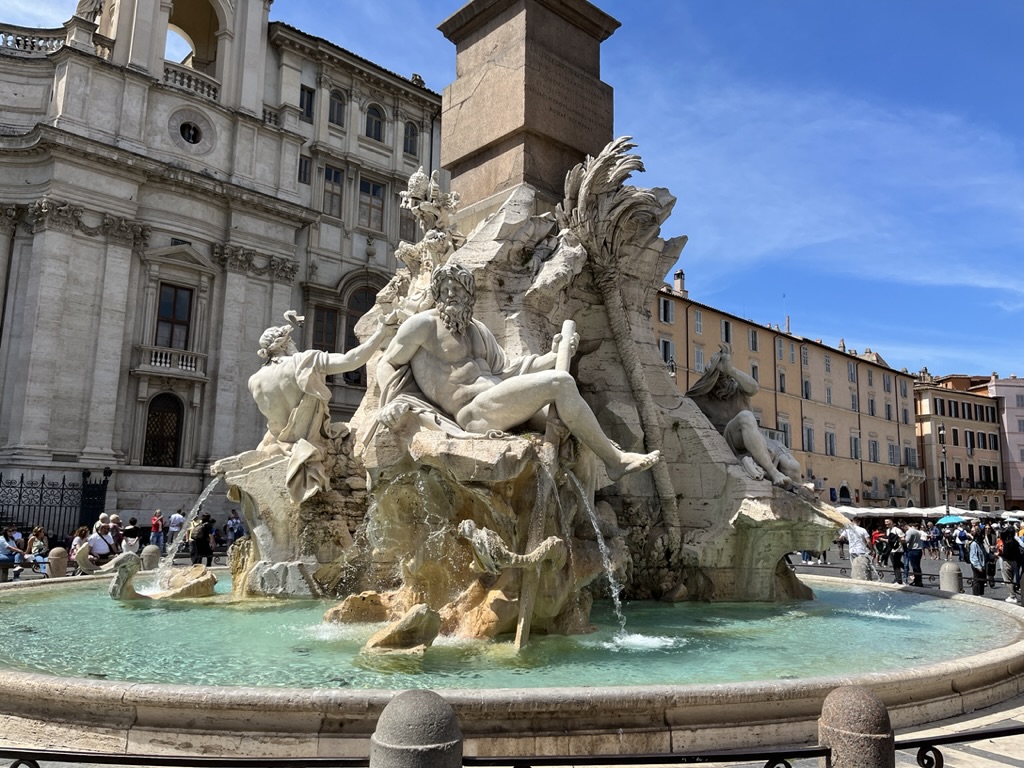
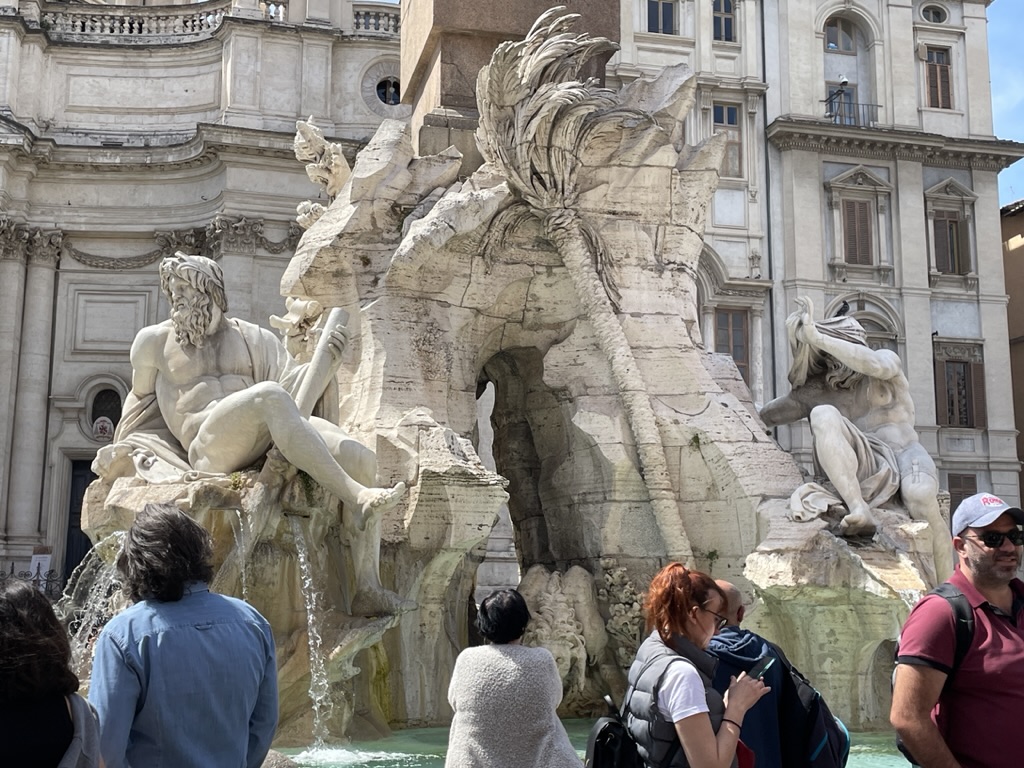
The boys are especially interested in the SPQR – as that is part of the Percy Series we’re just finishing!
“Something the size of a star destroyer” lol.
Ok but do Star destroyers have glow-in-the-dark laser tag and three-story water slides?